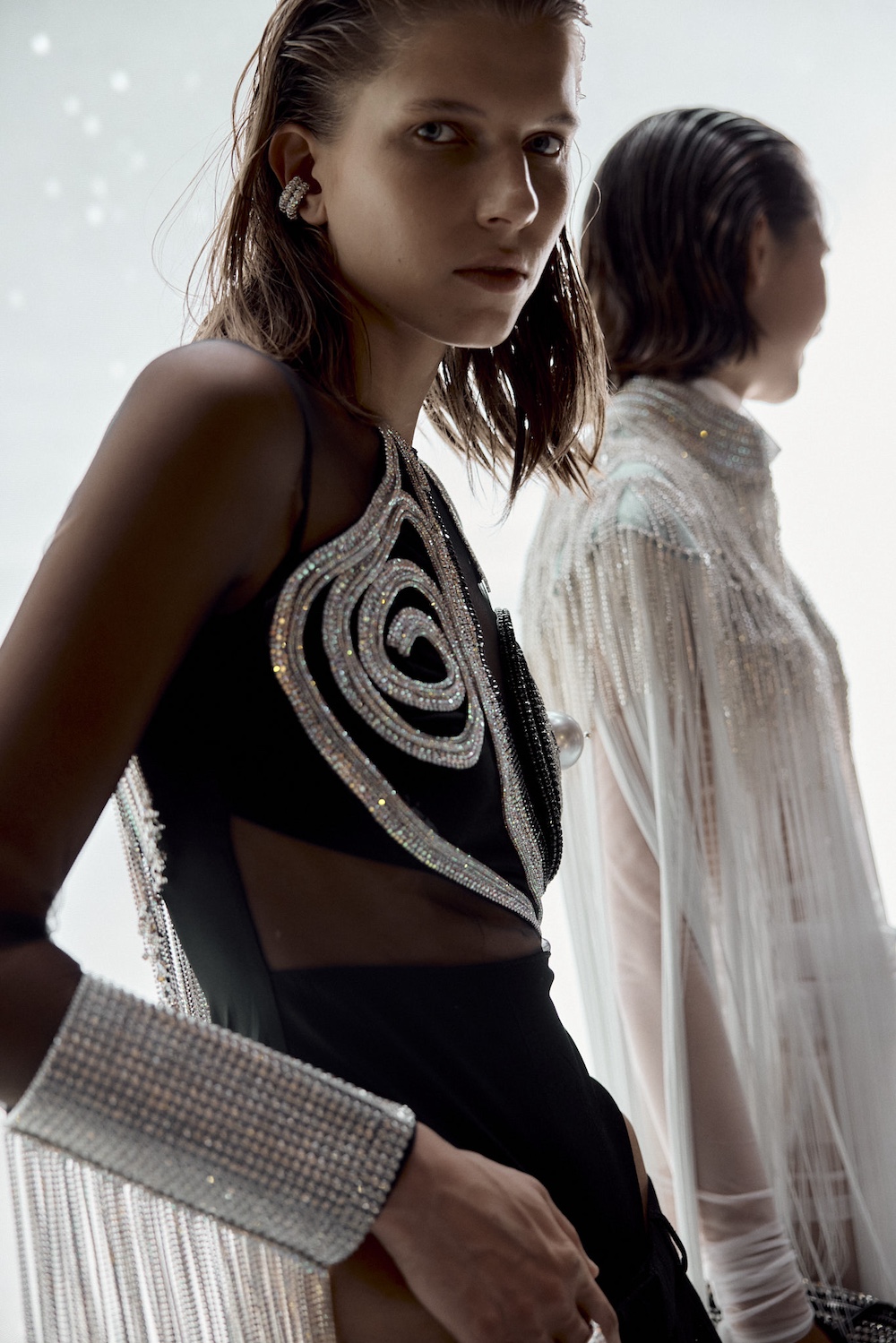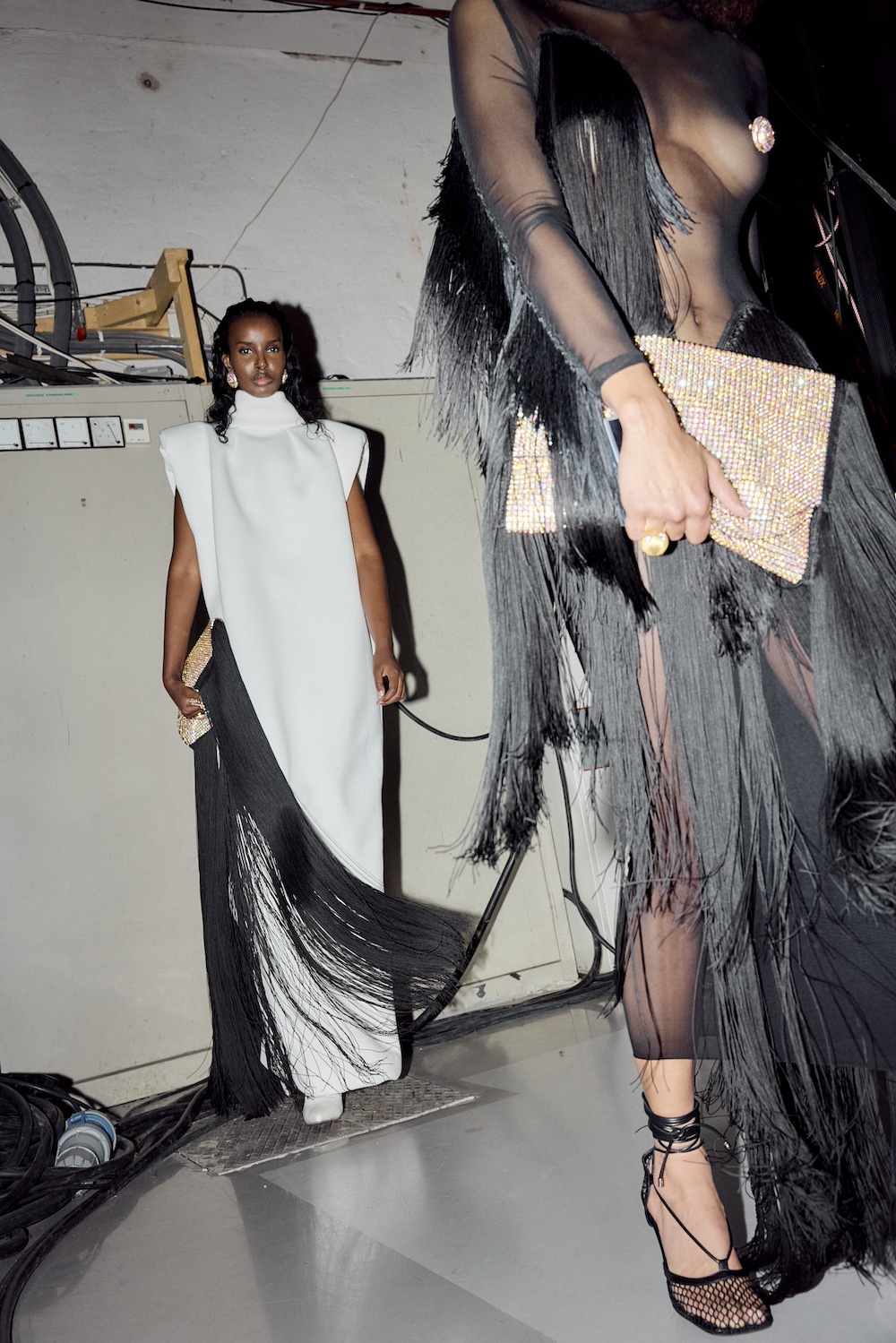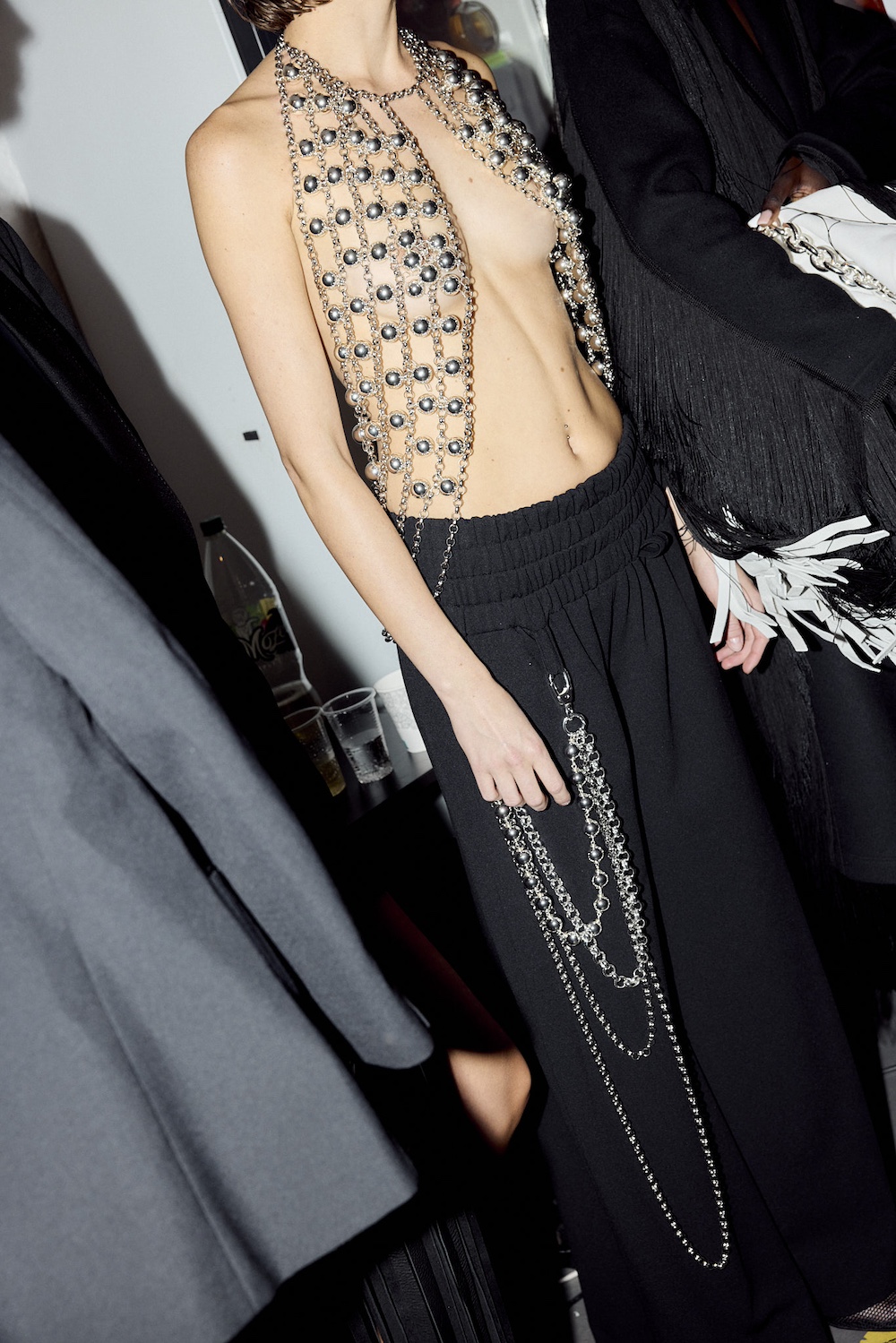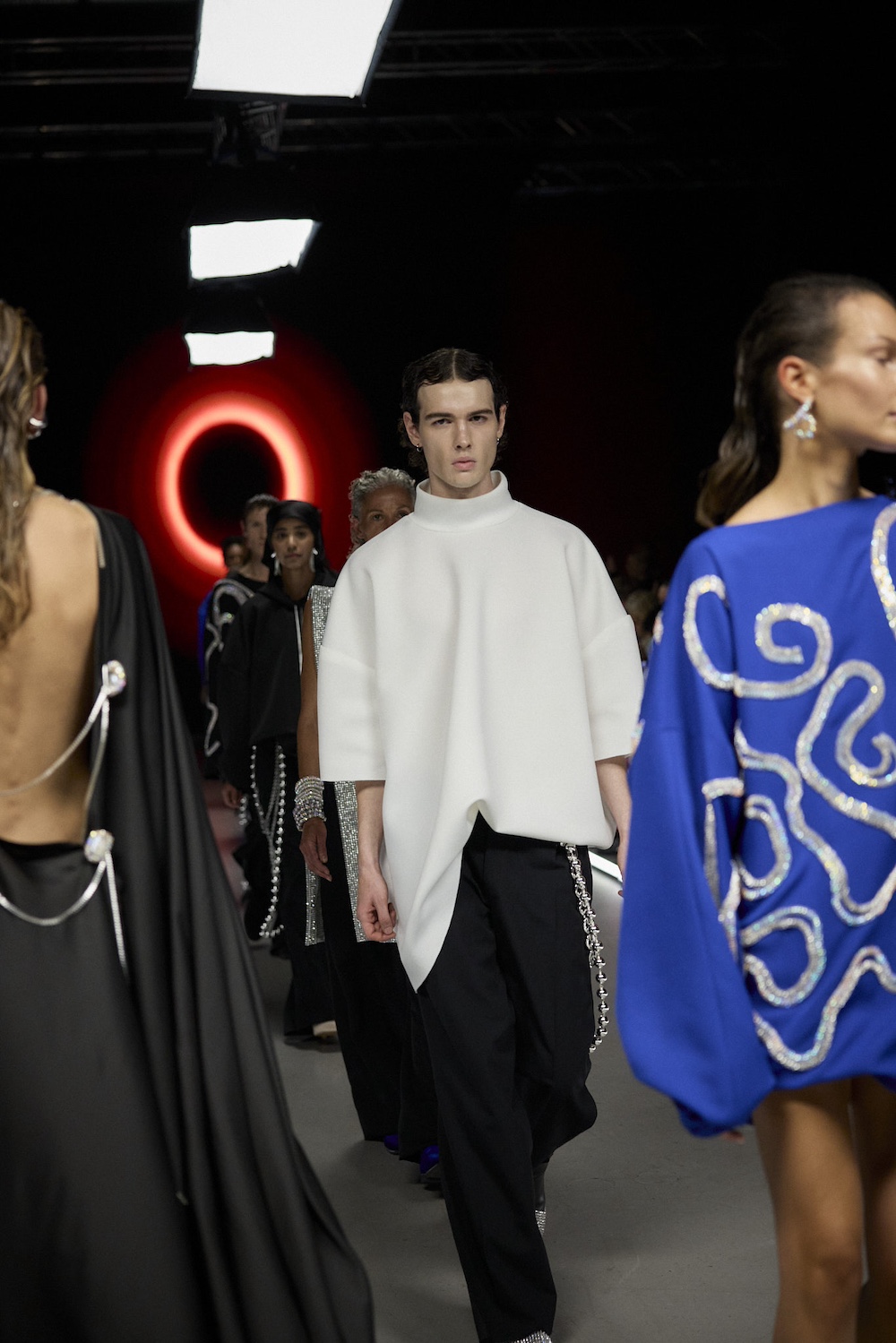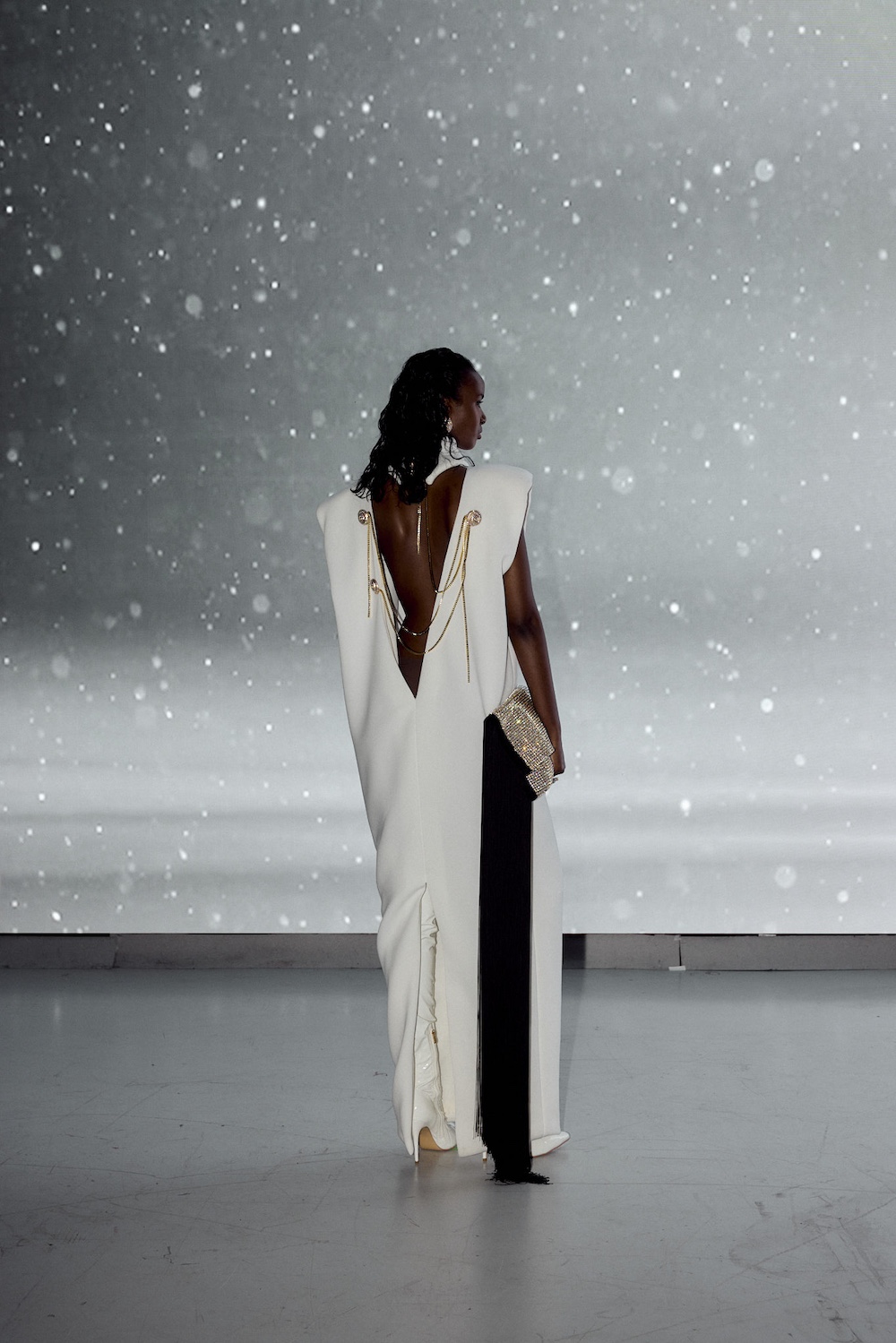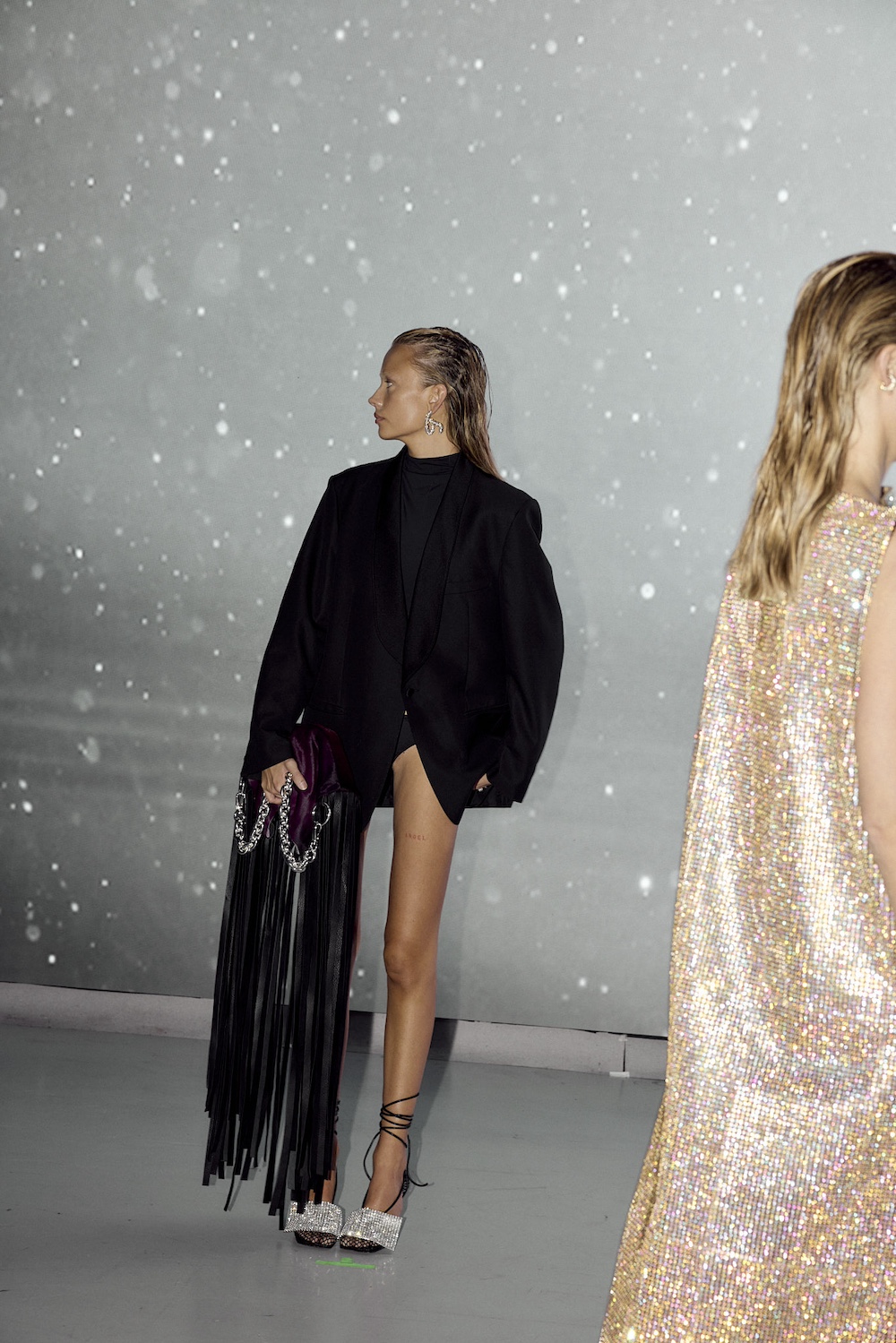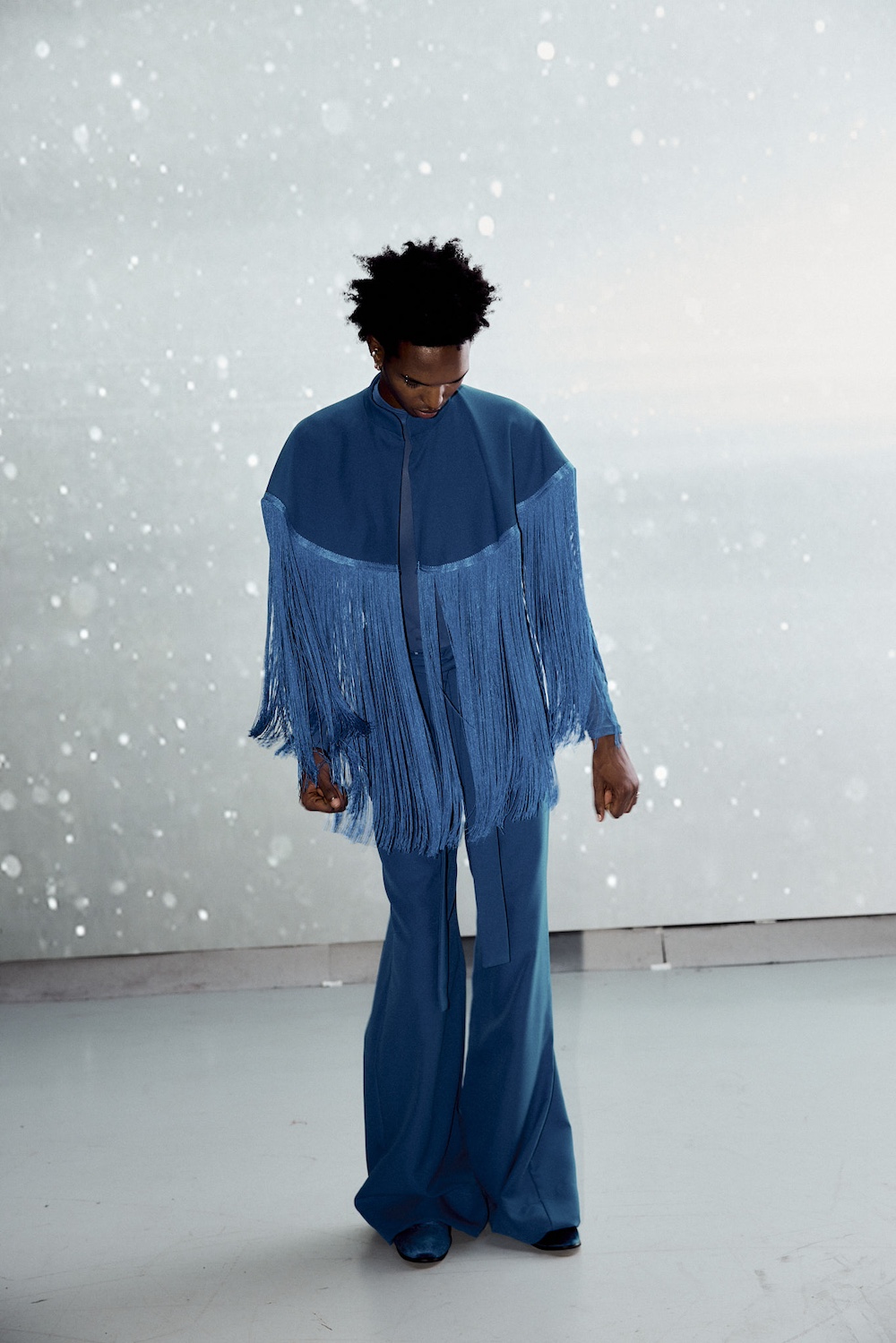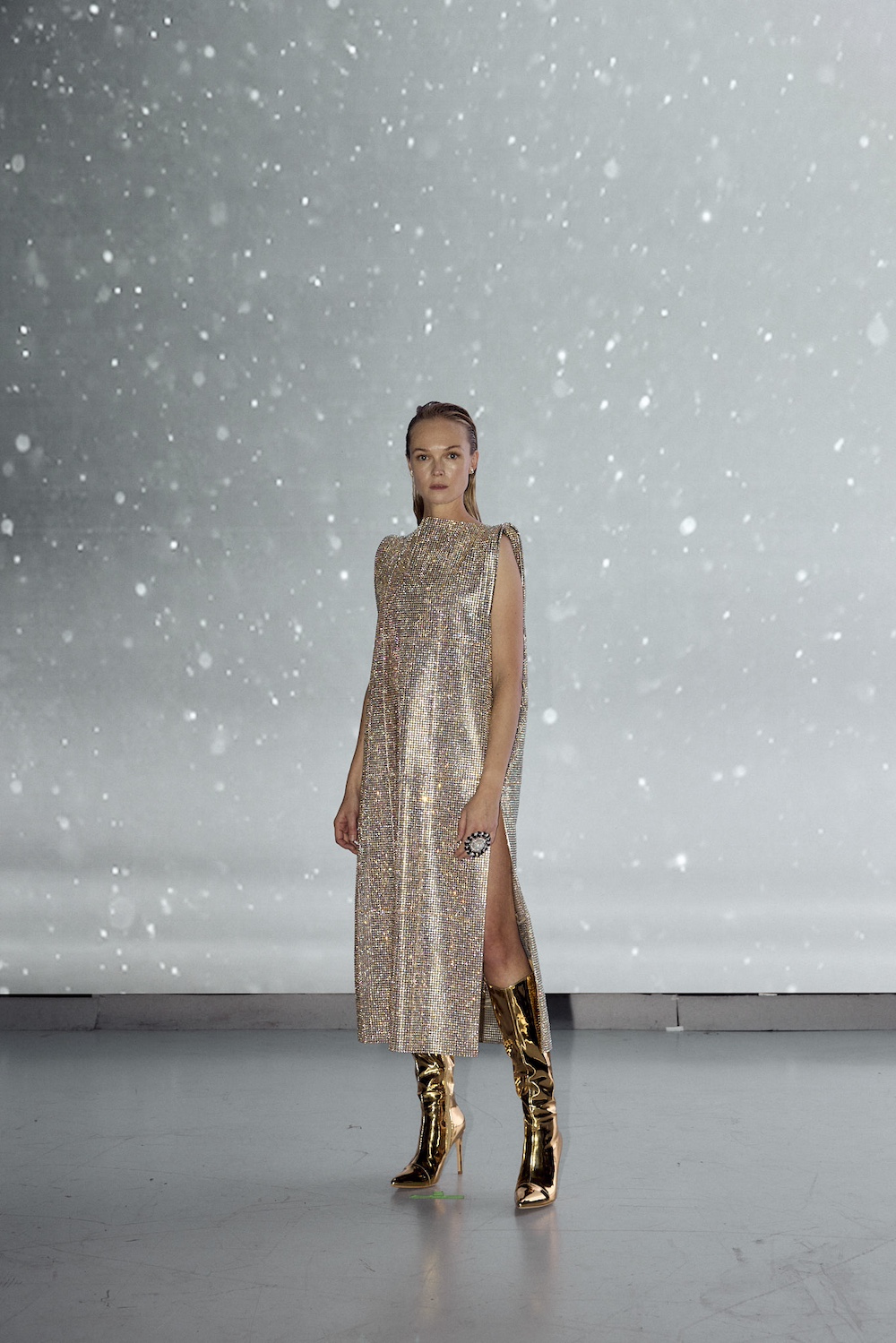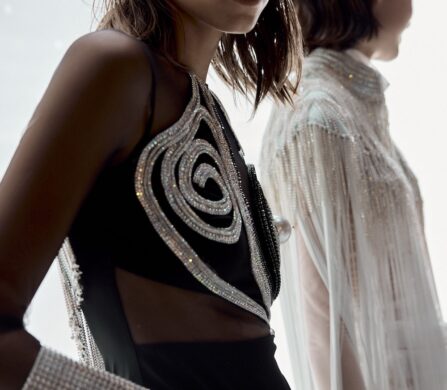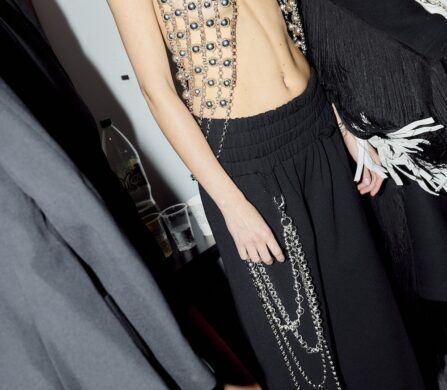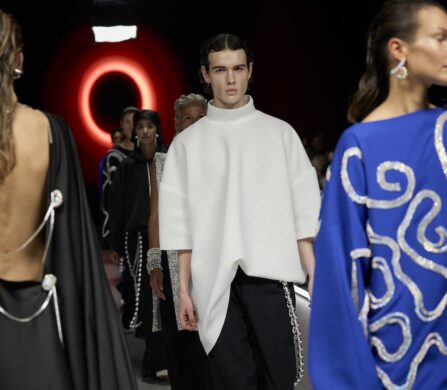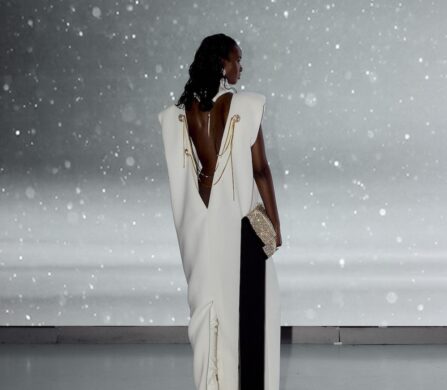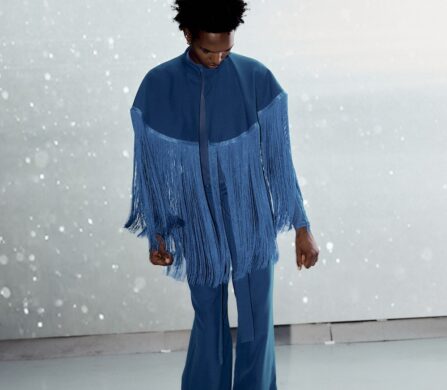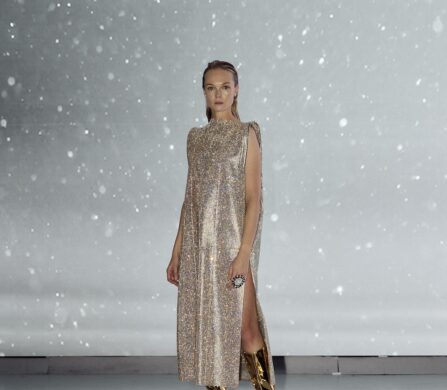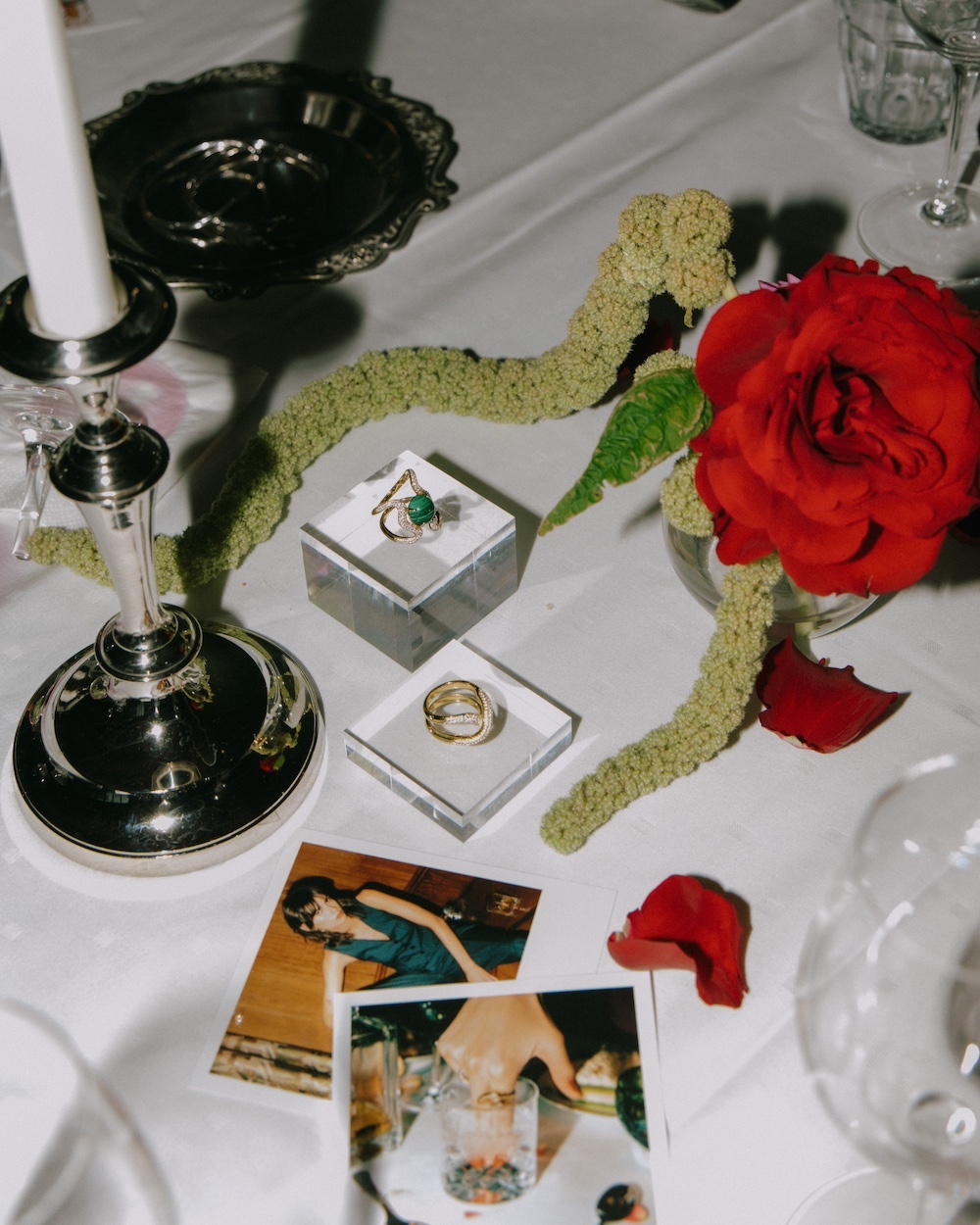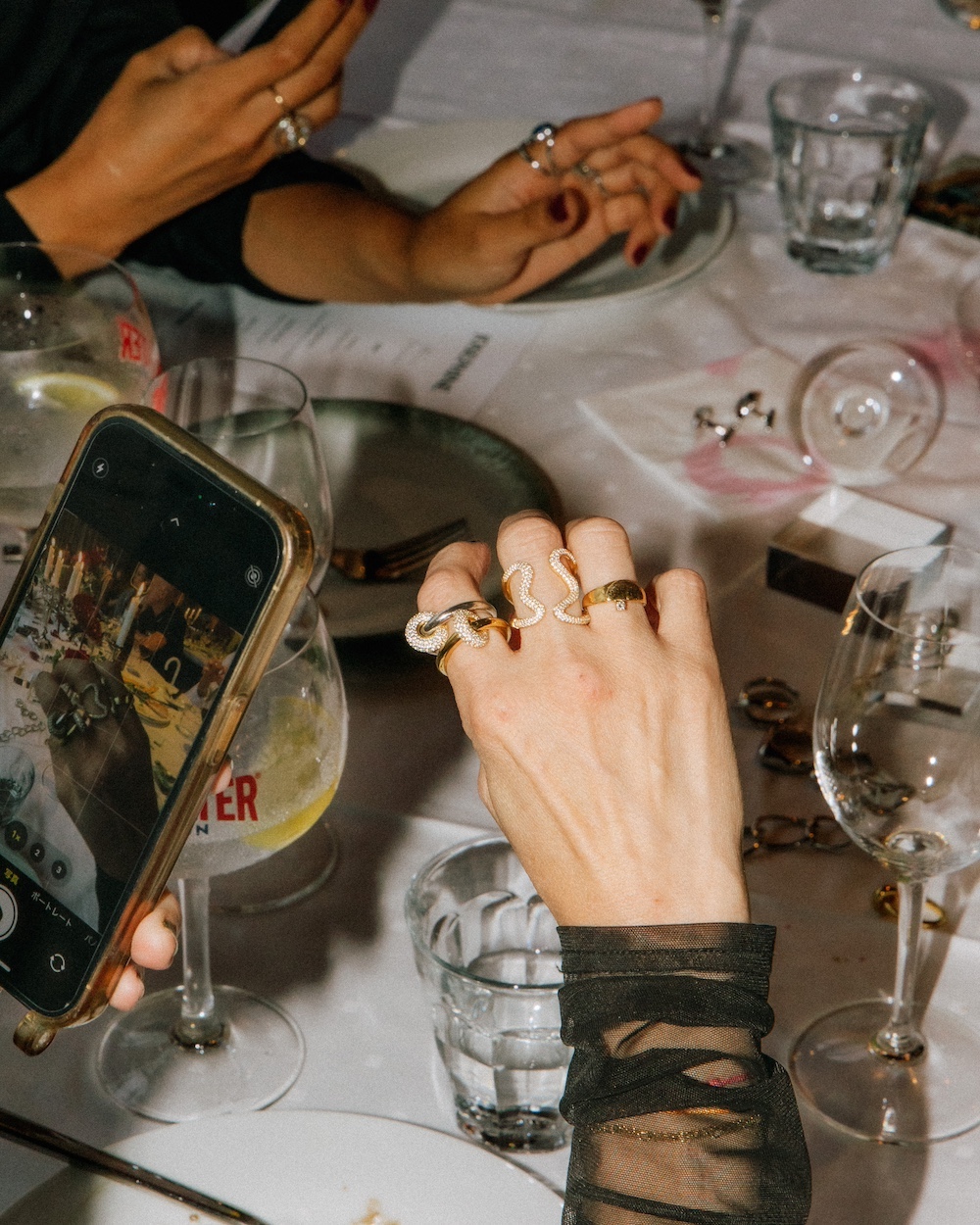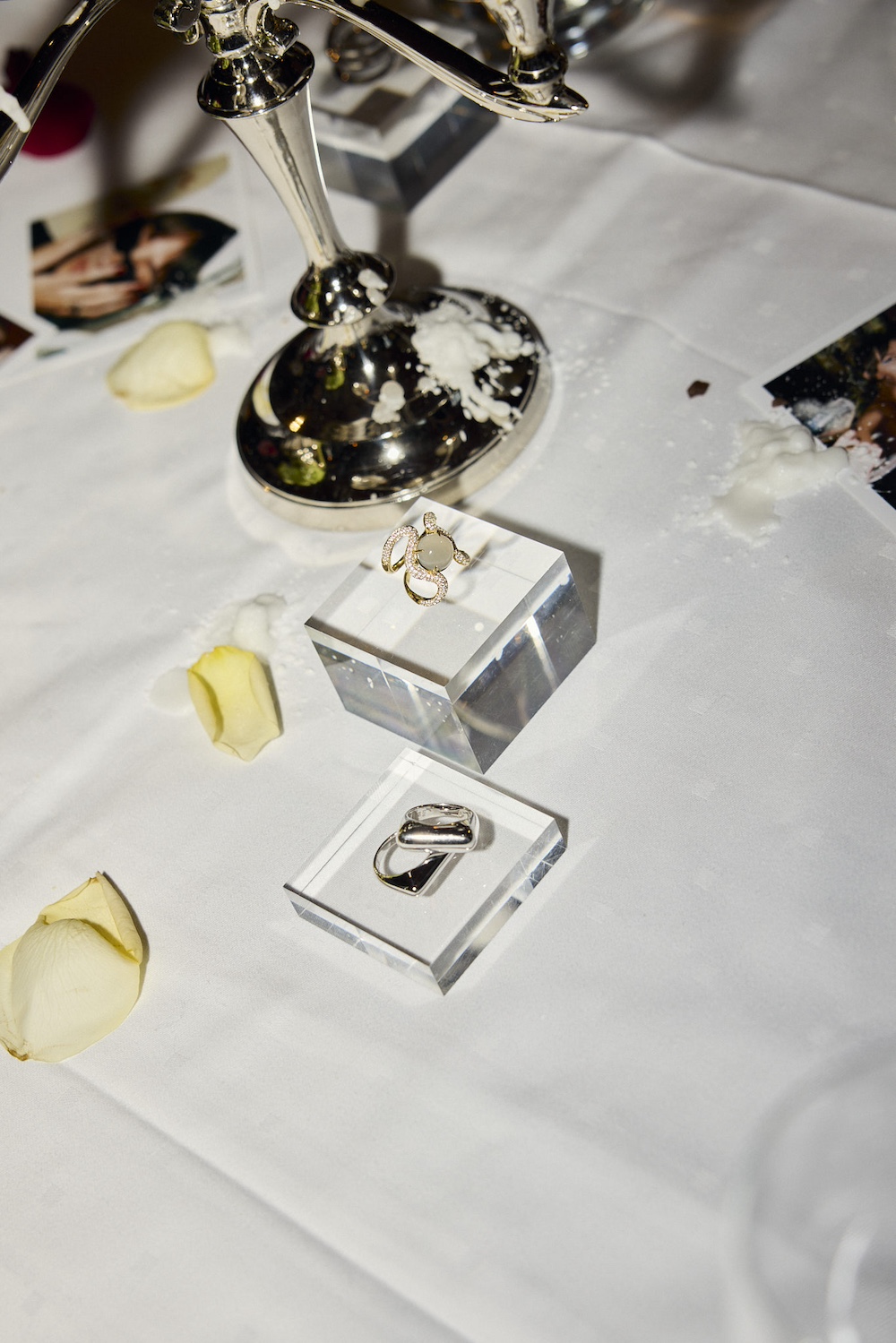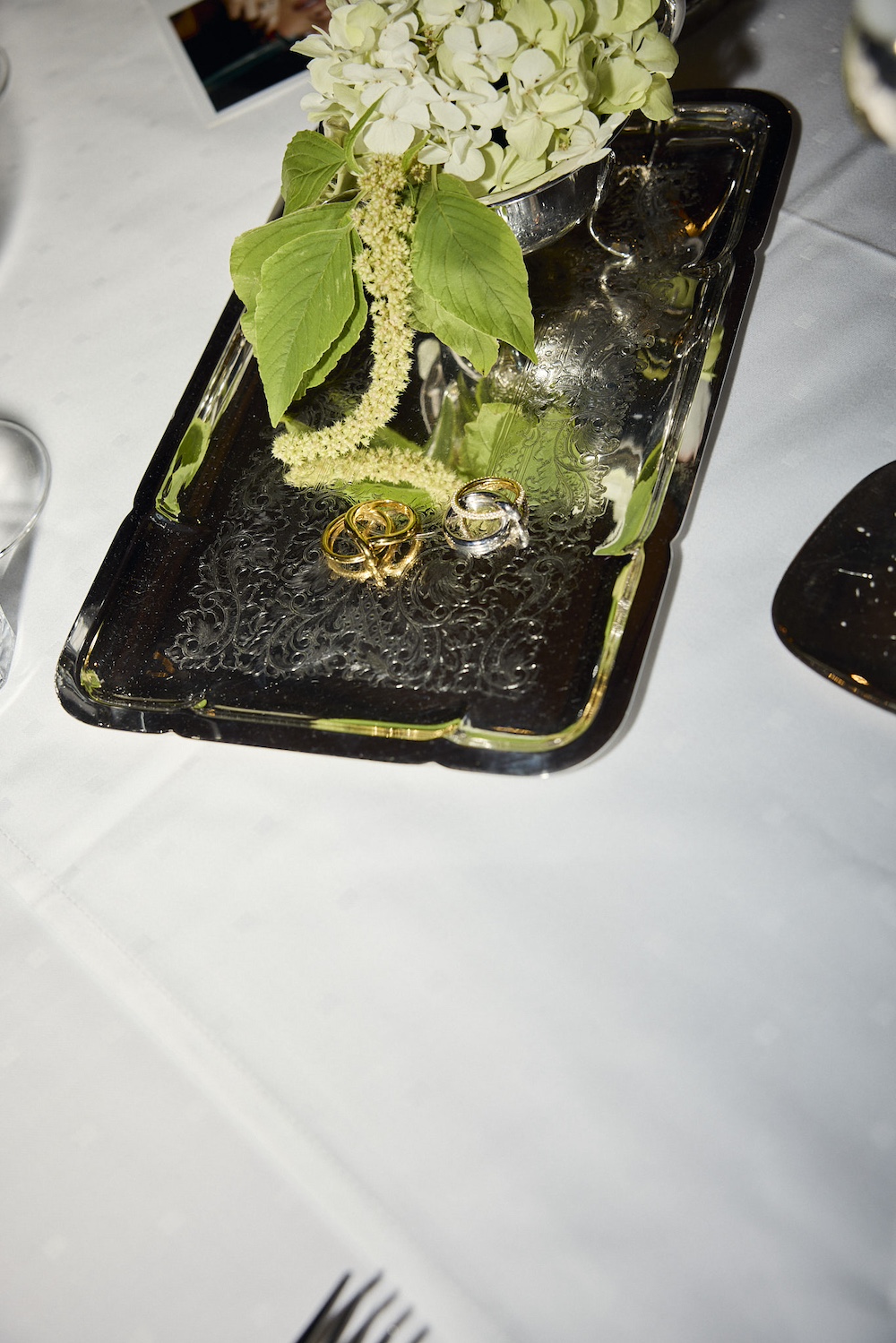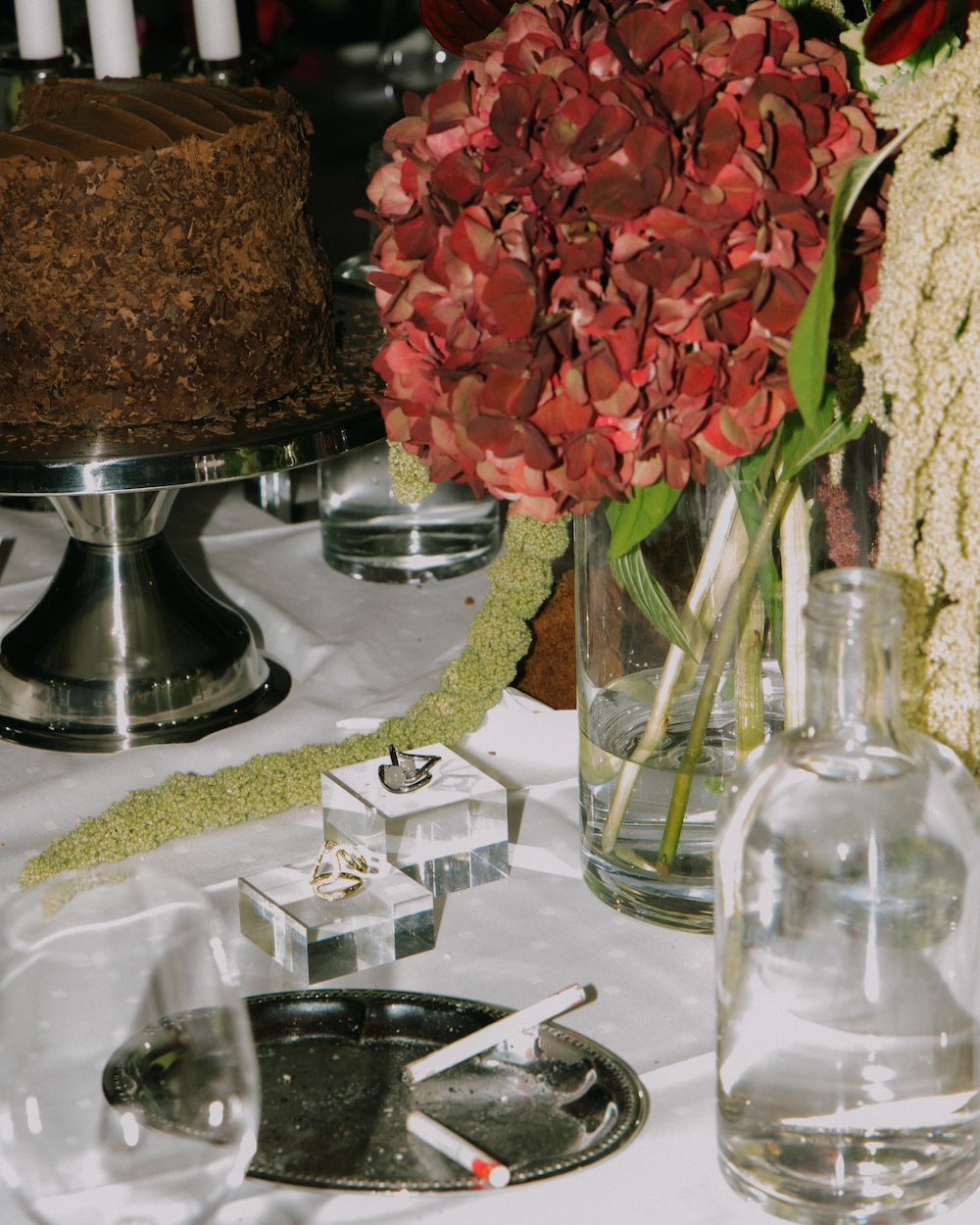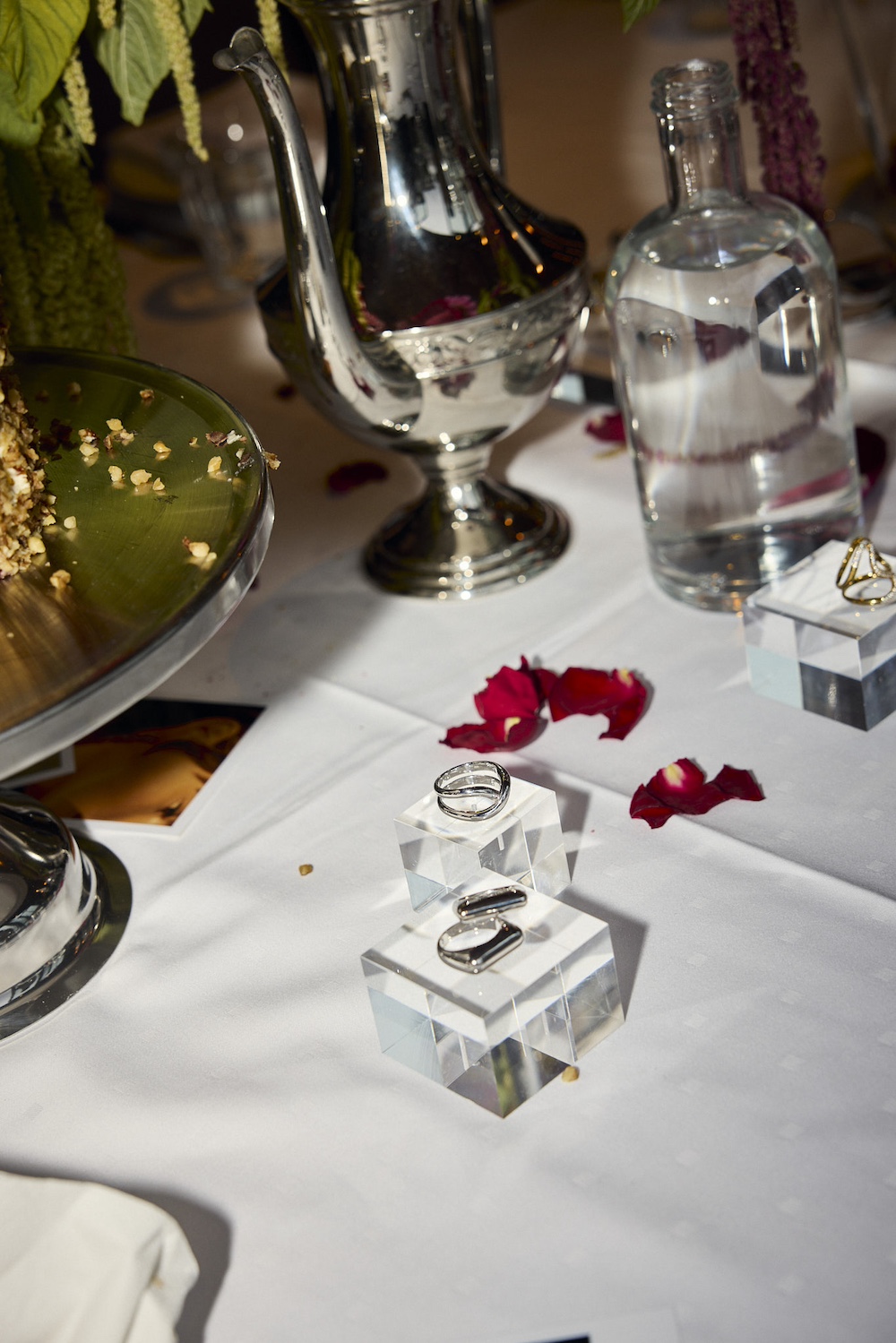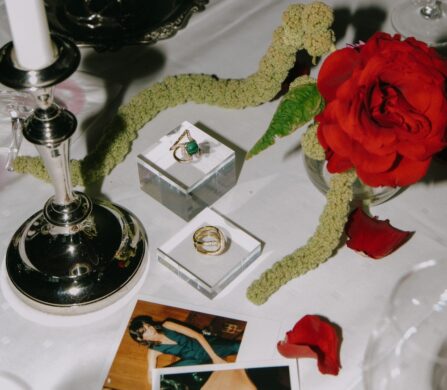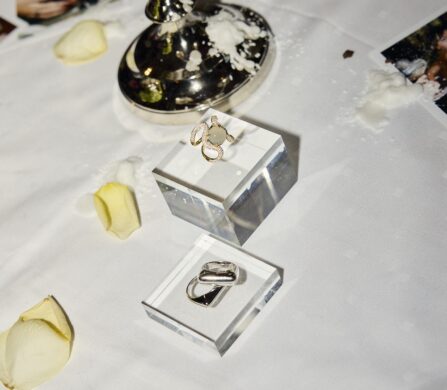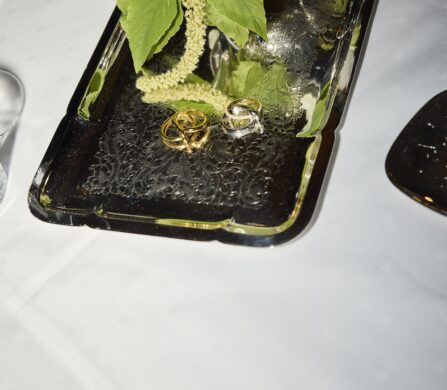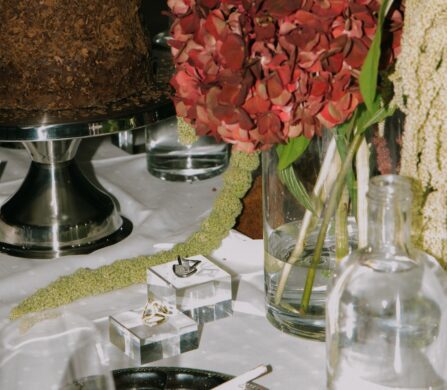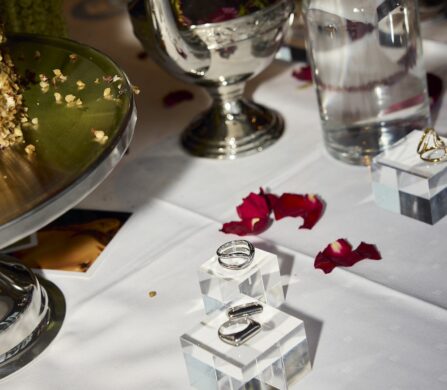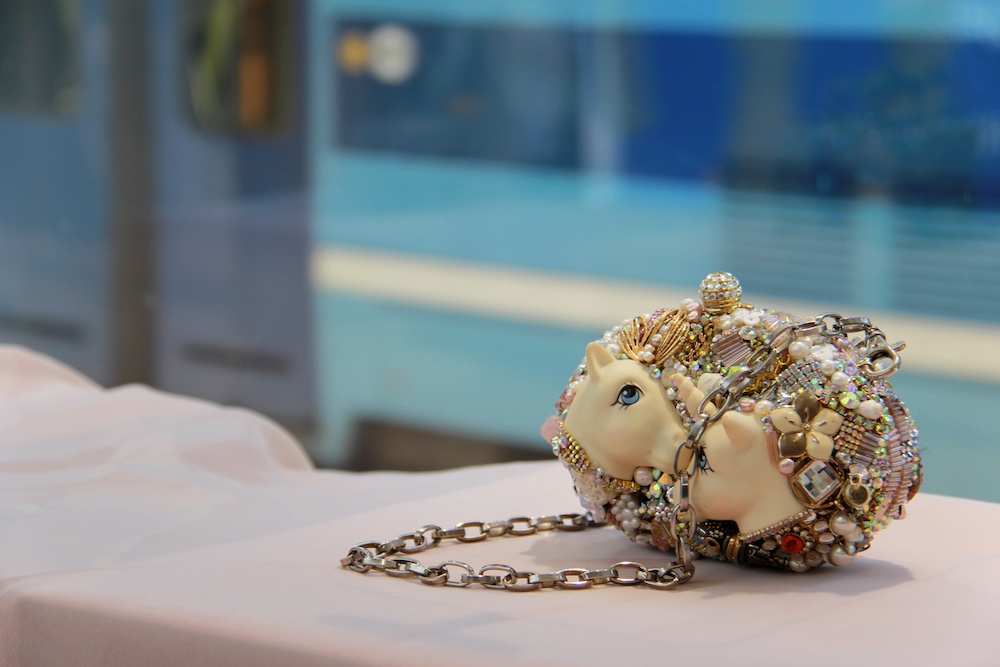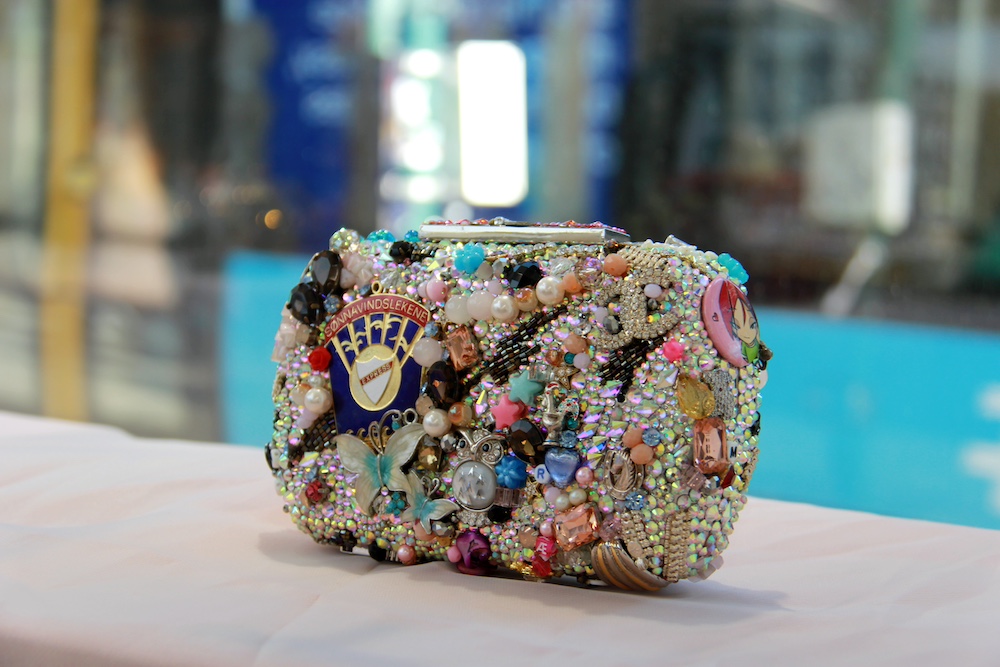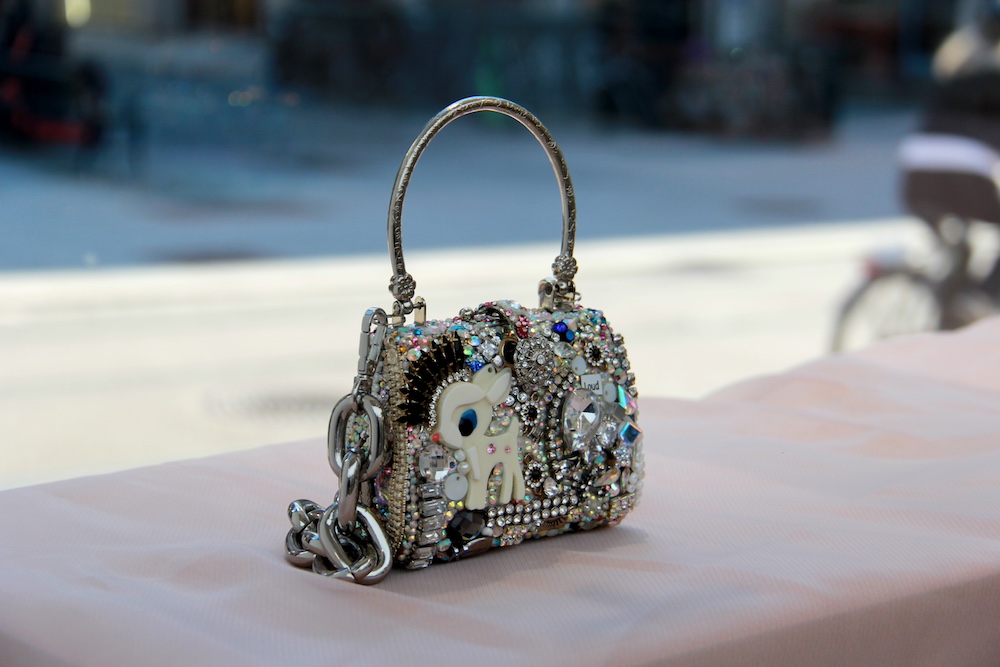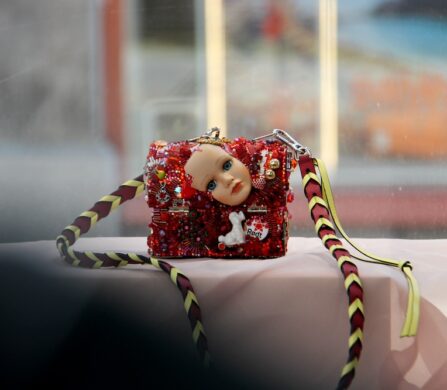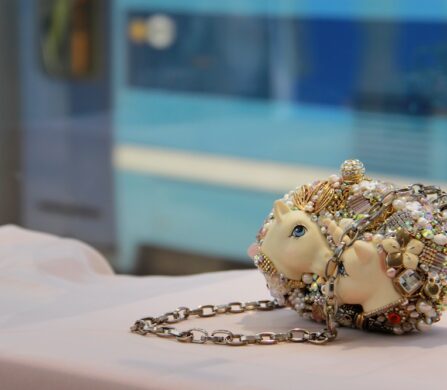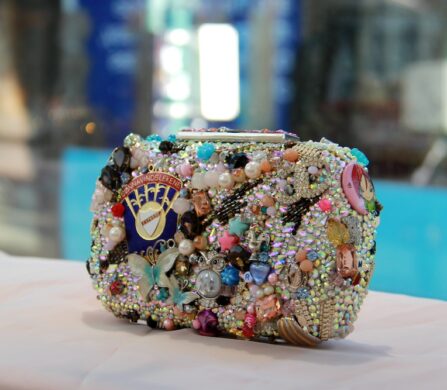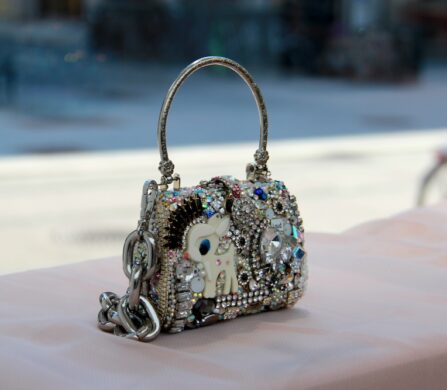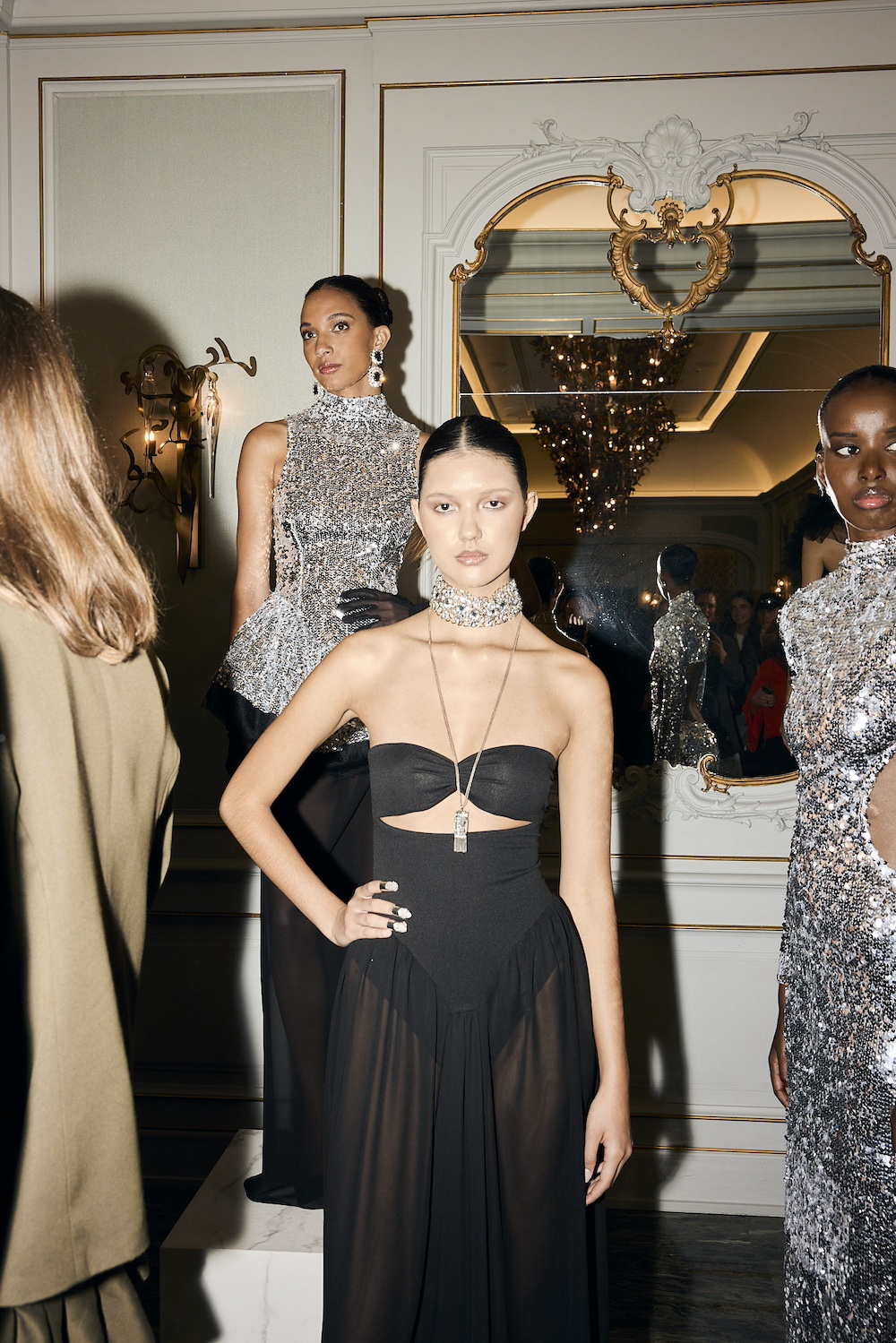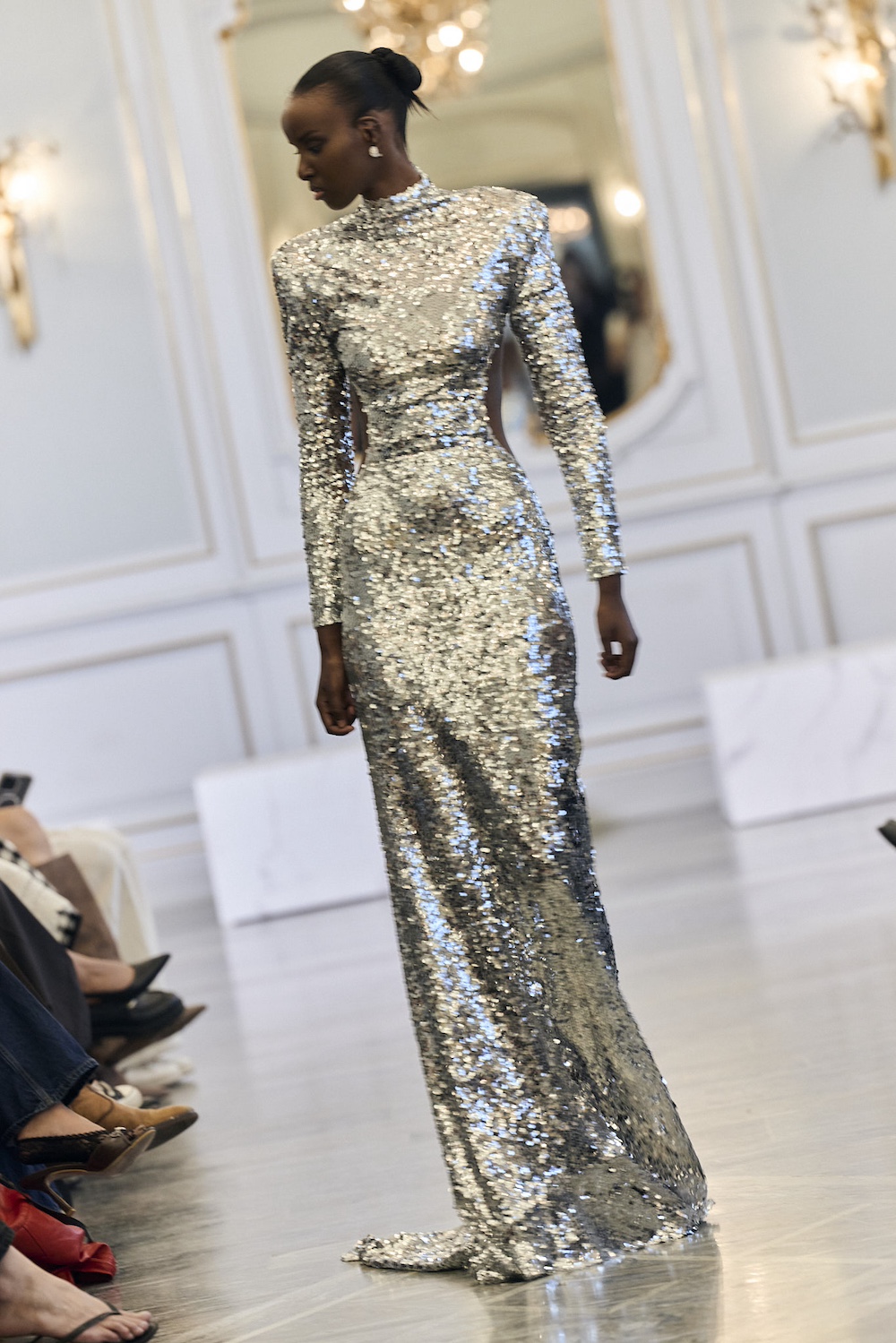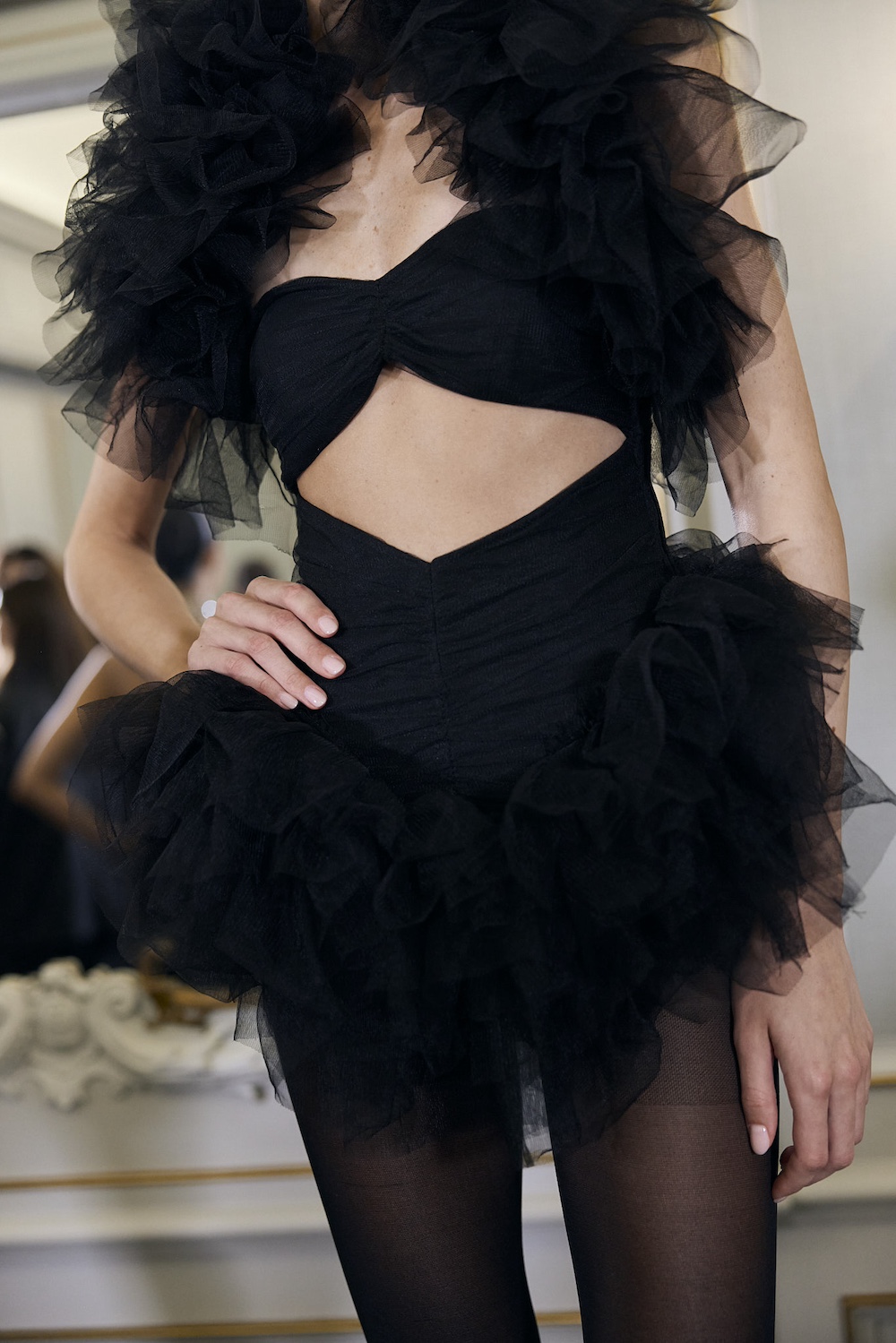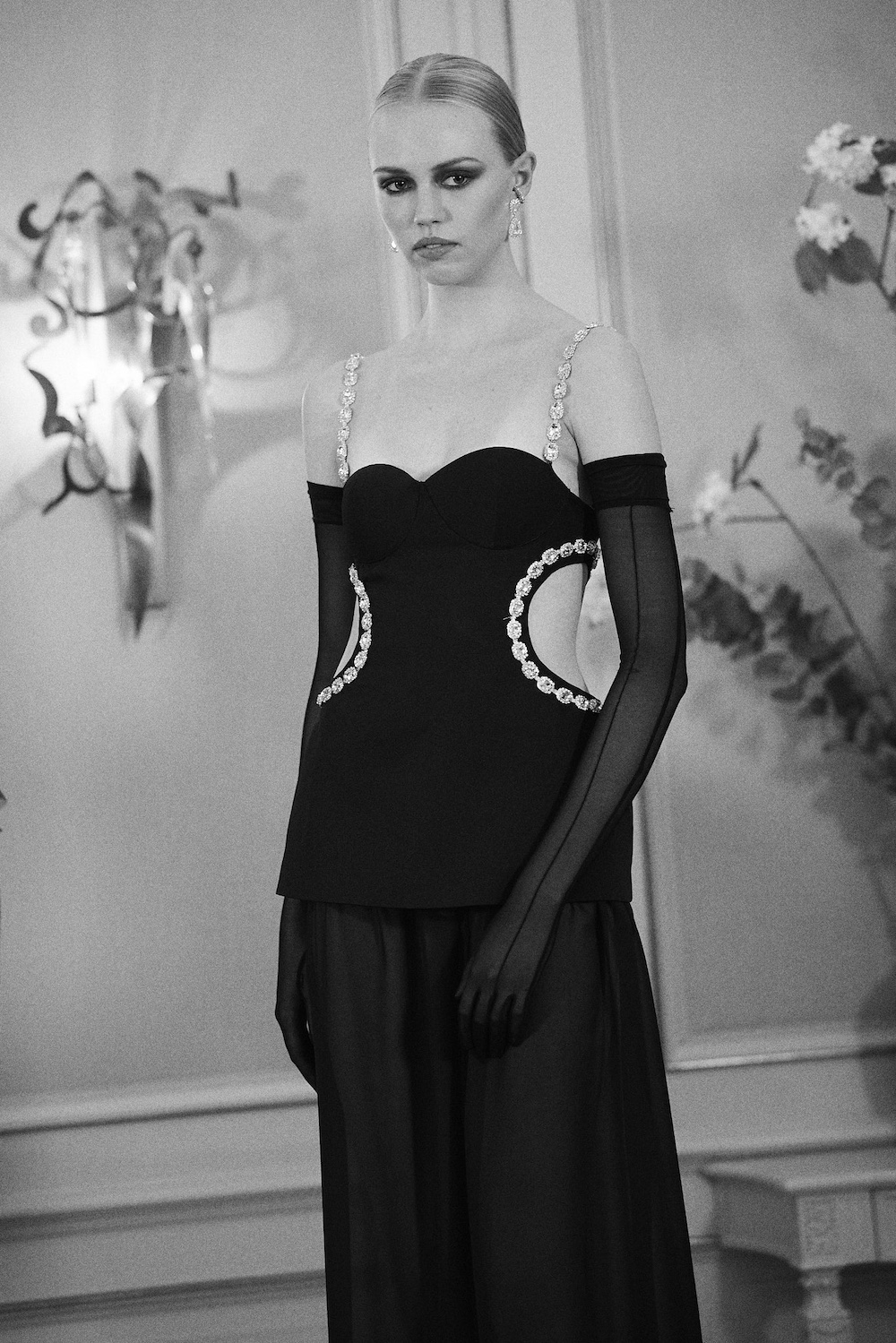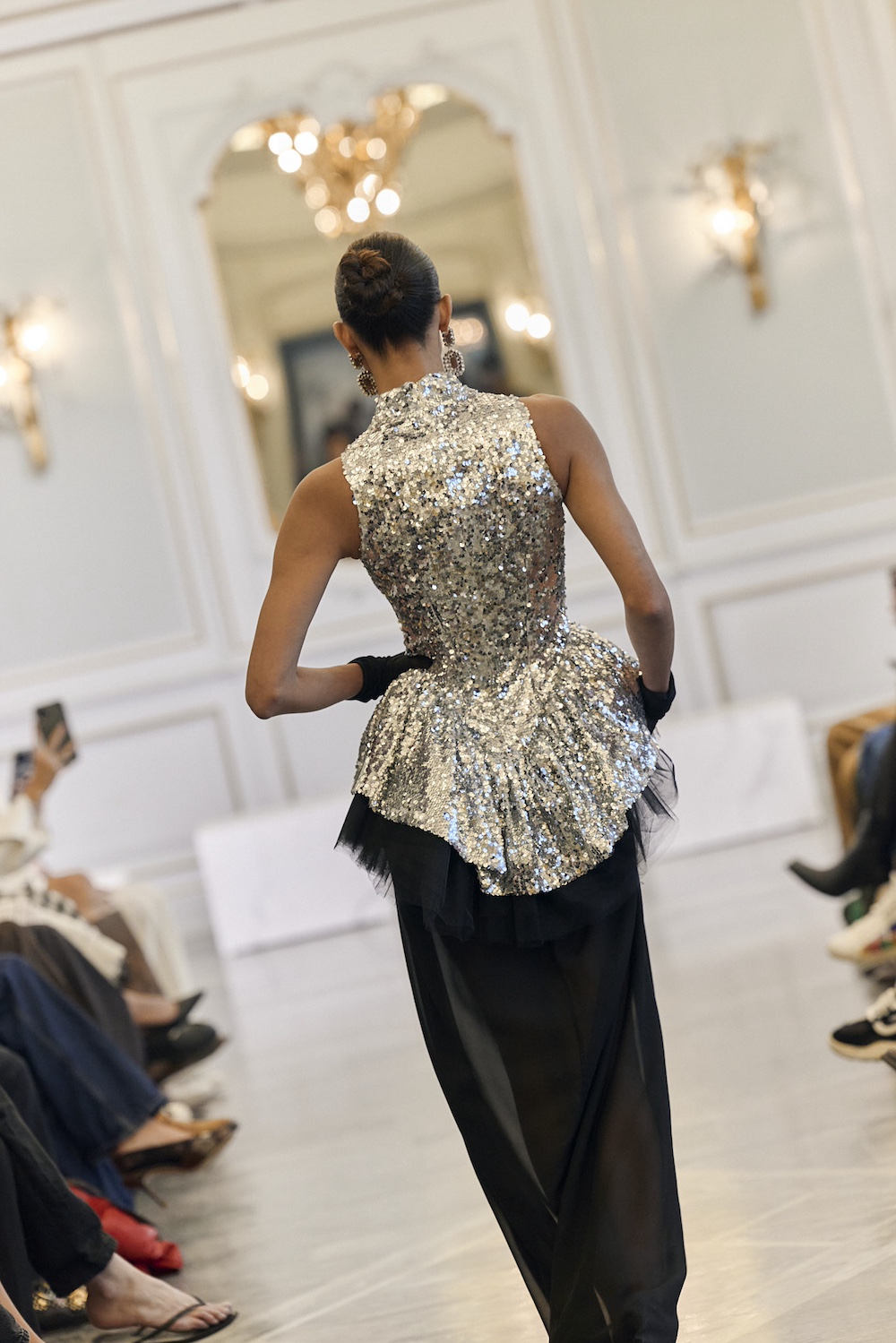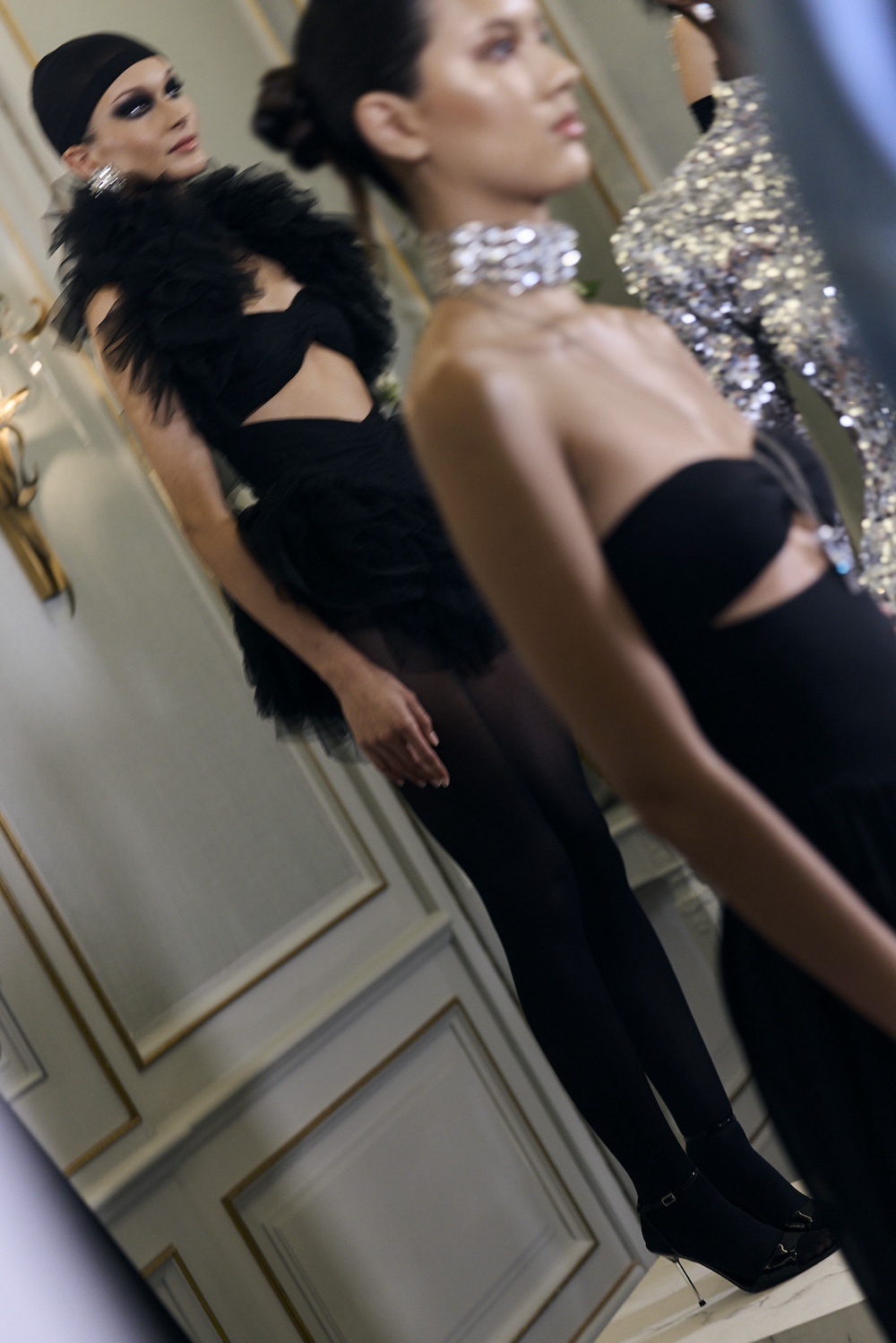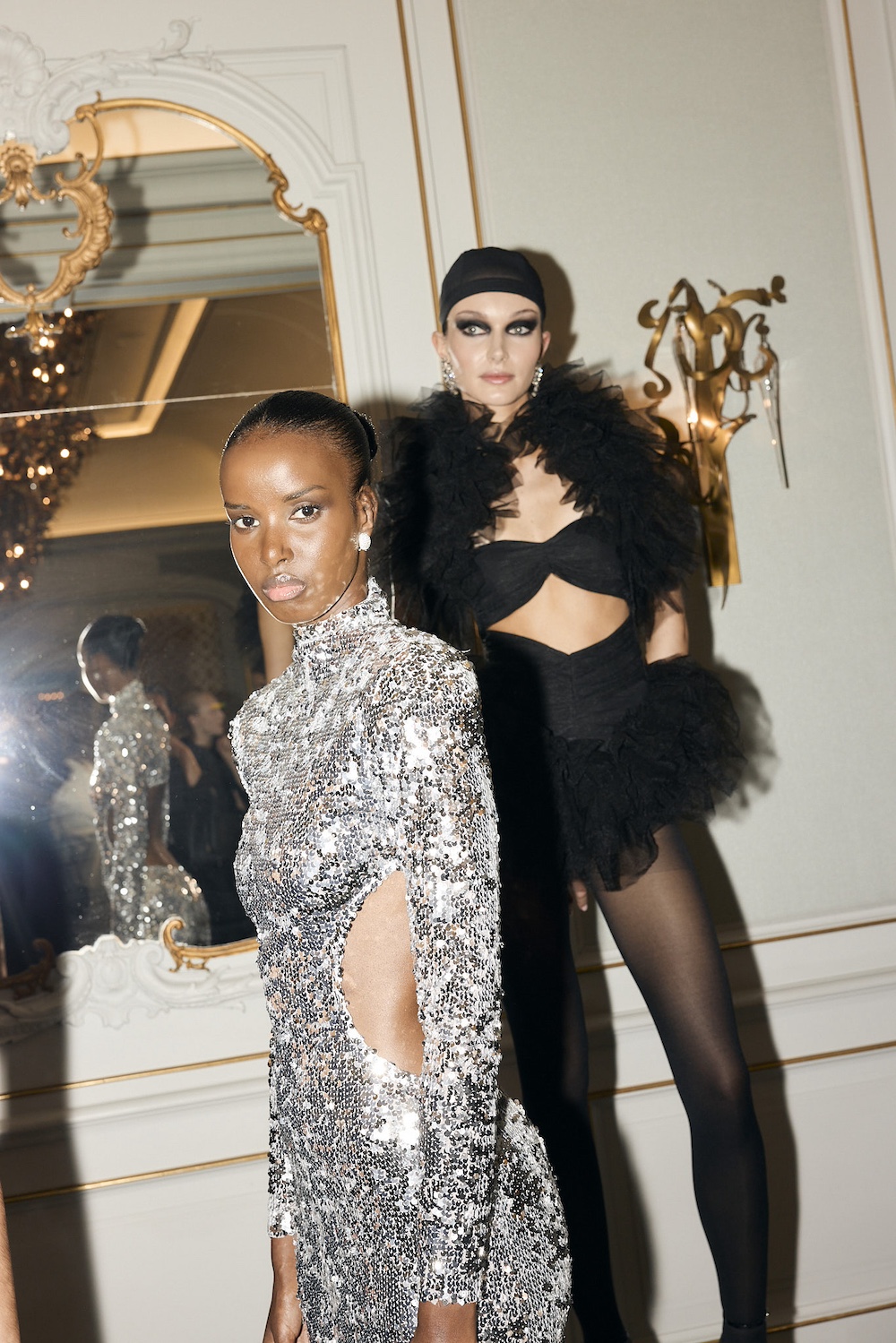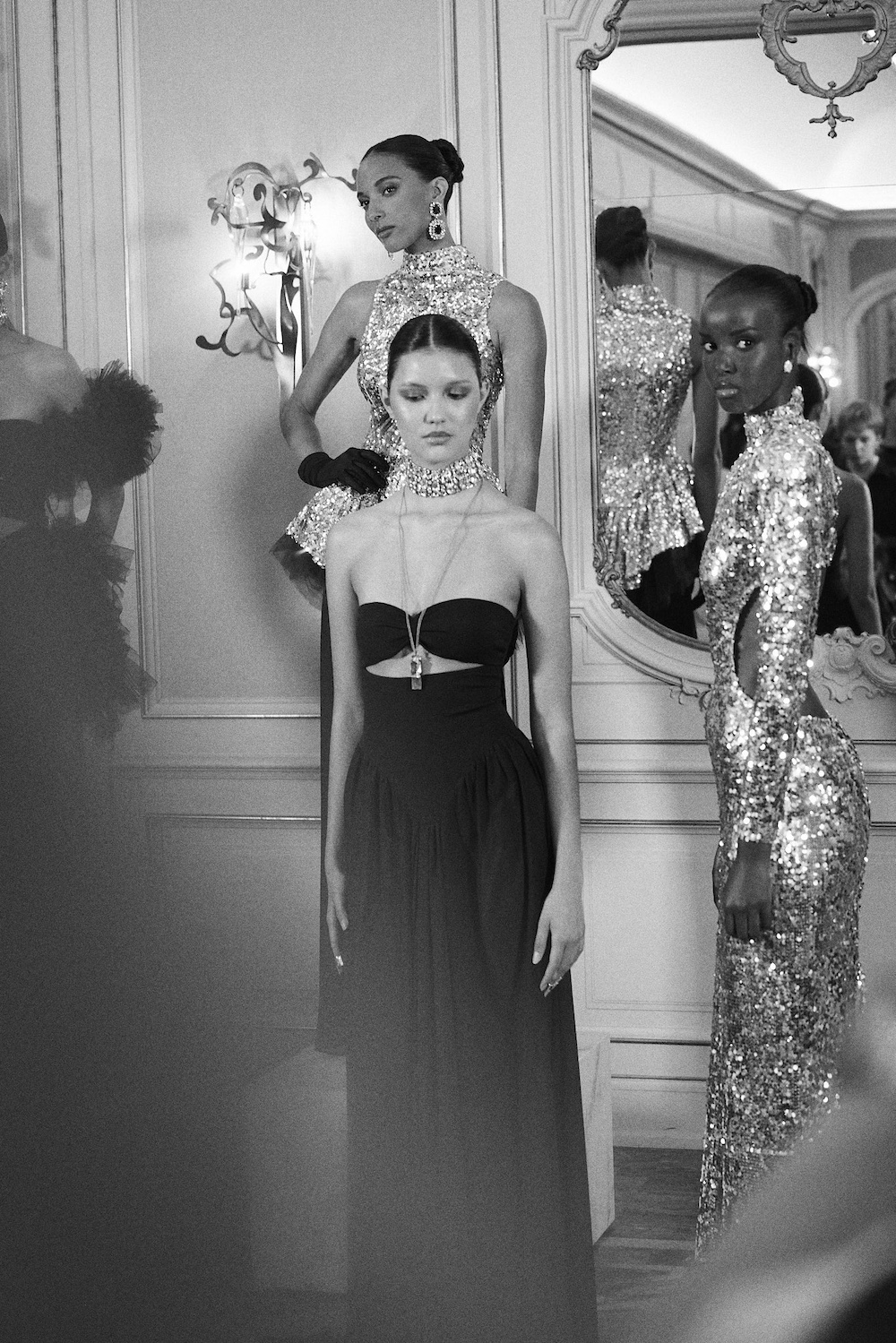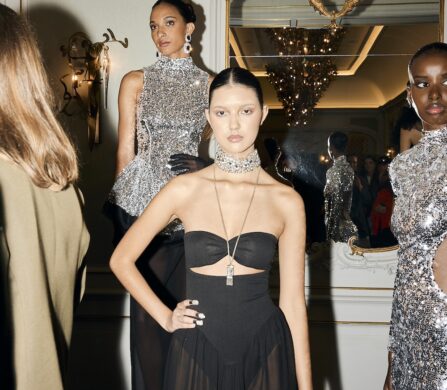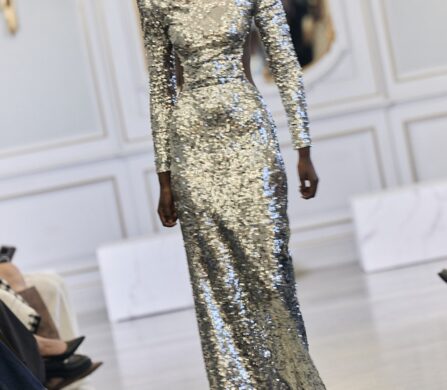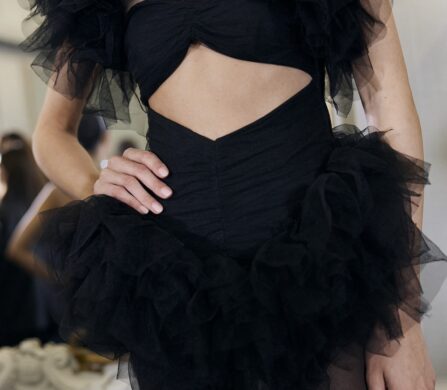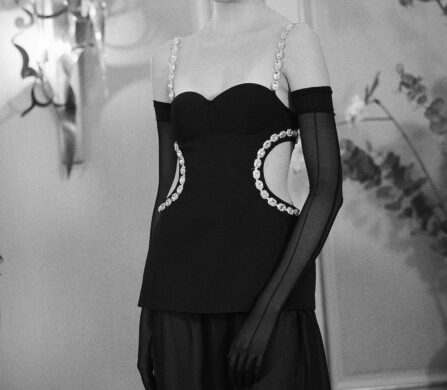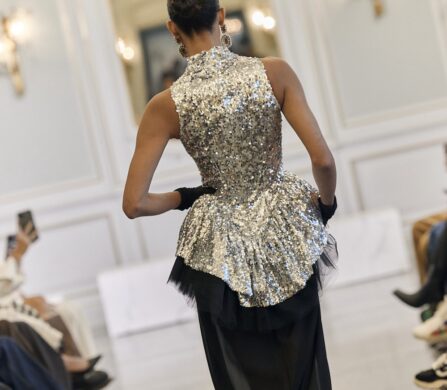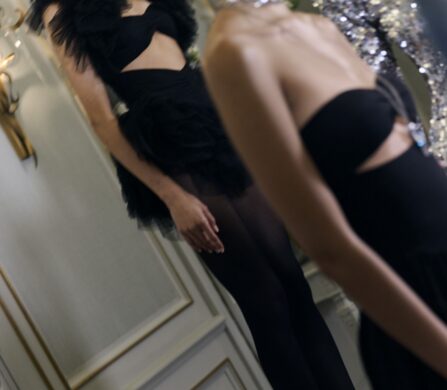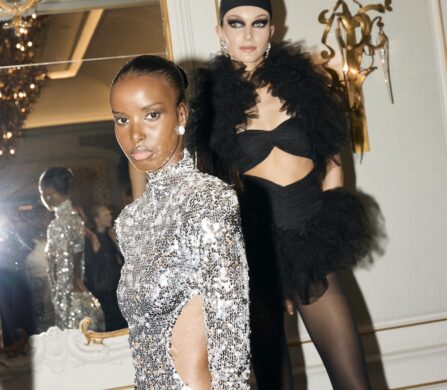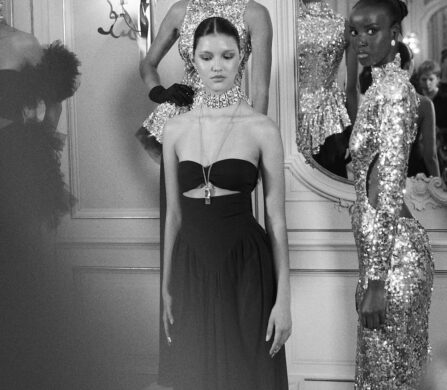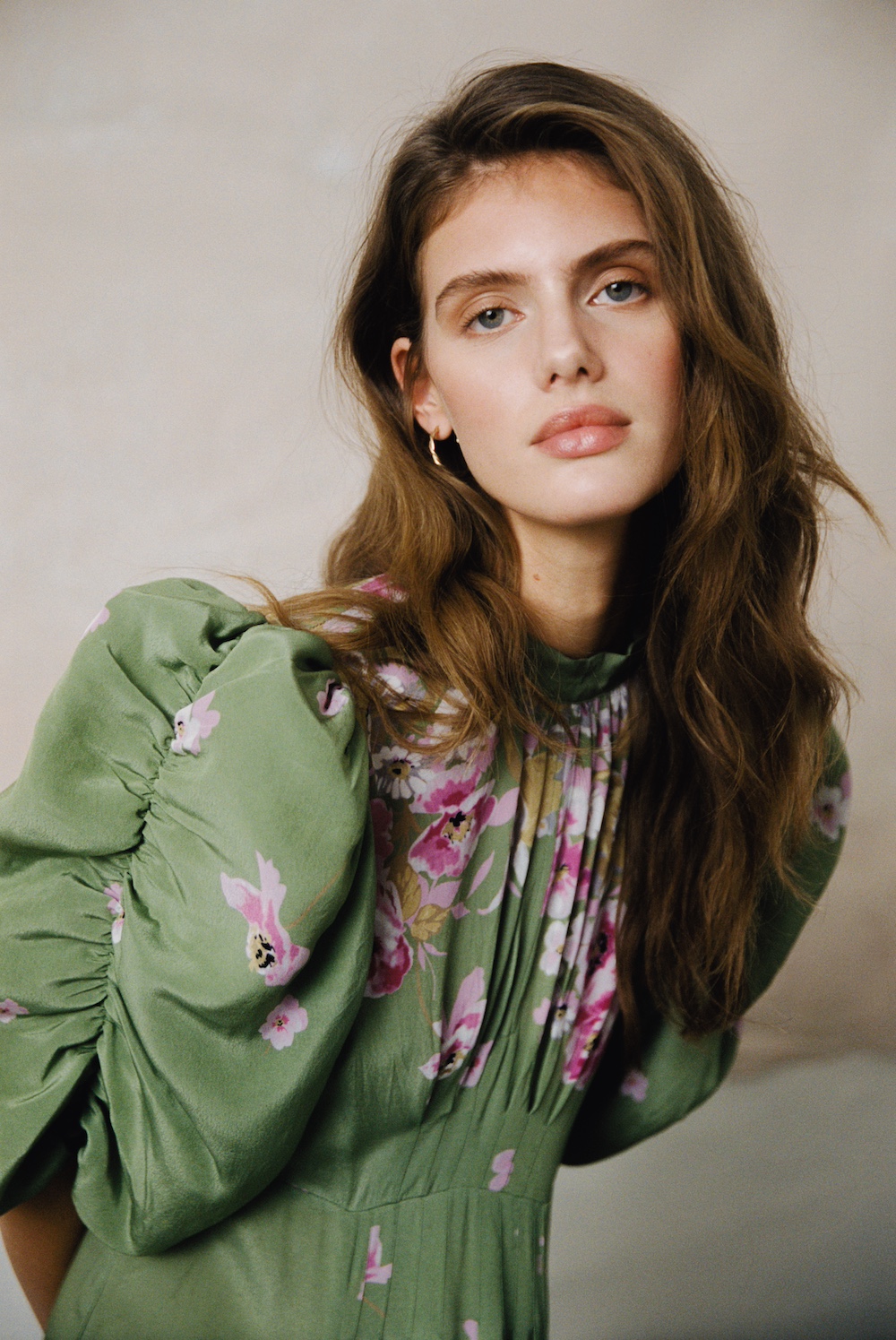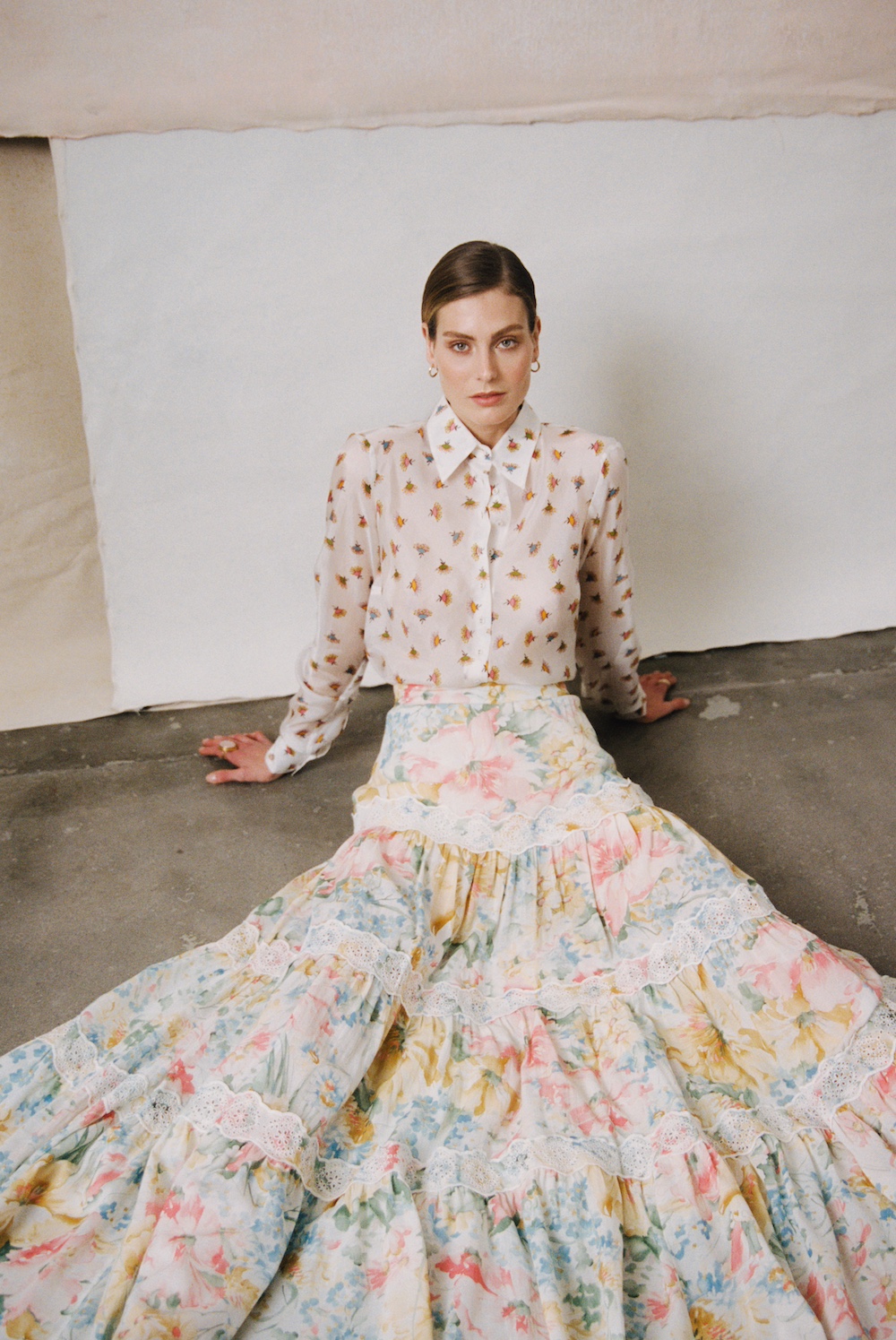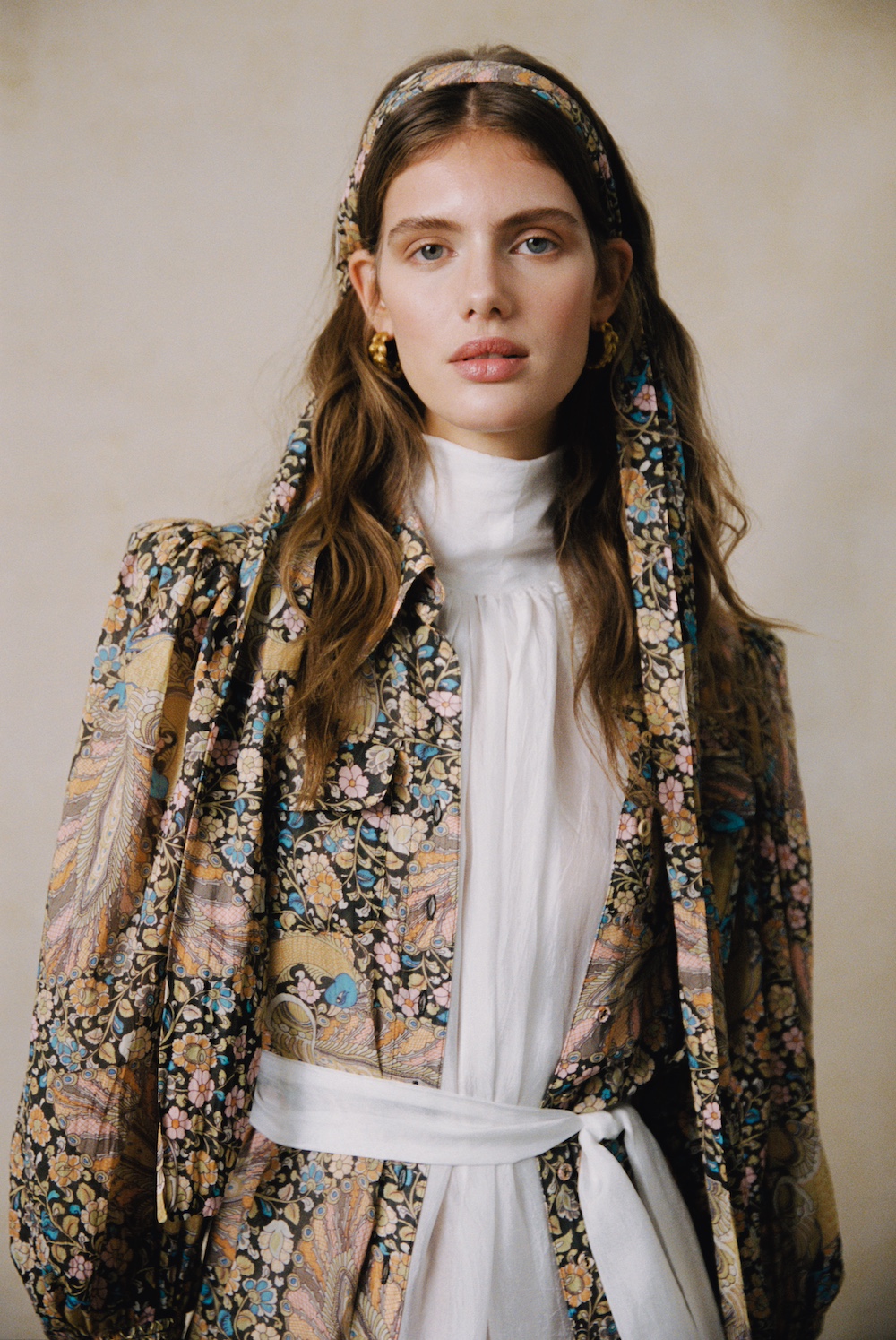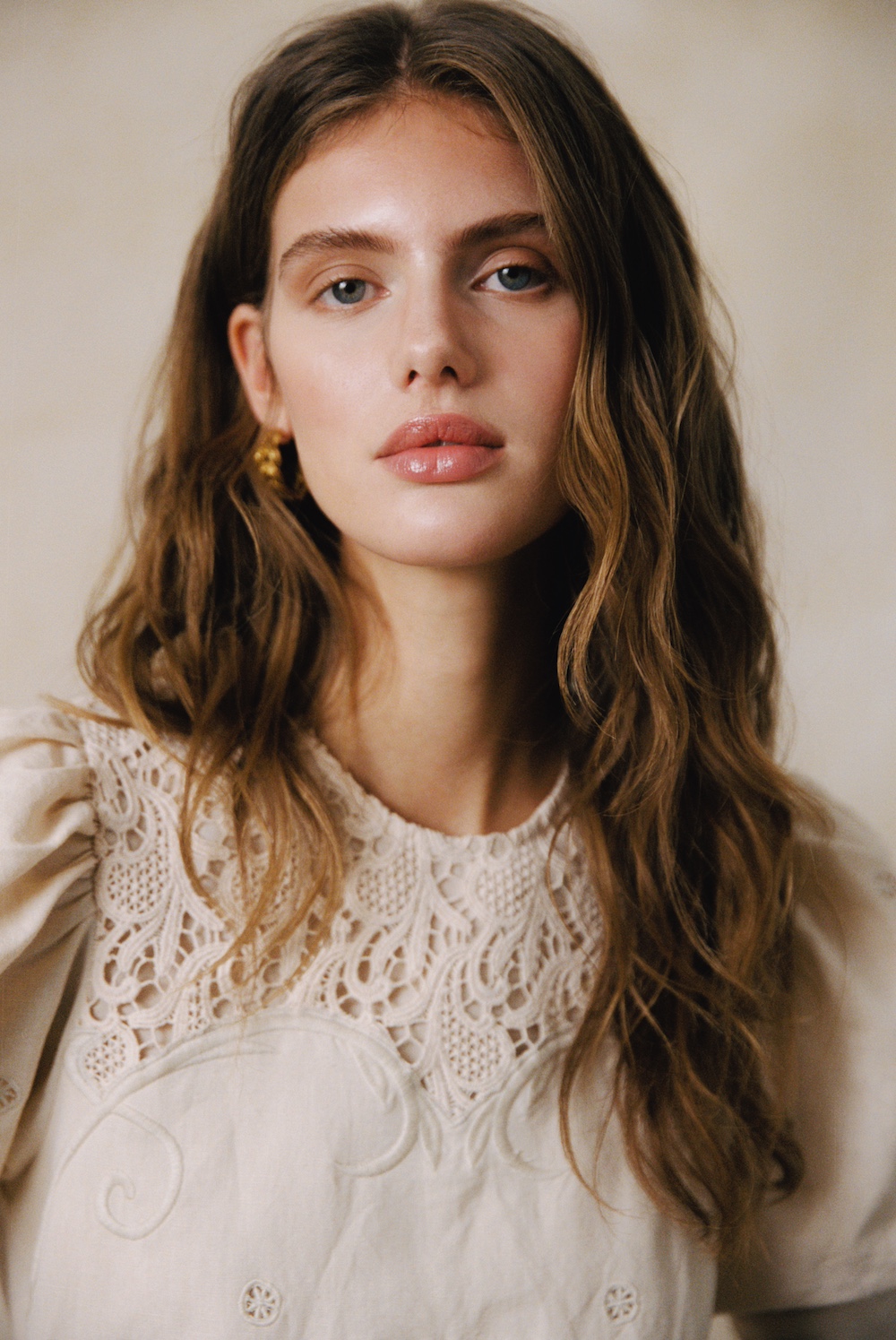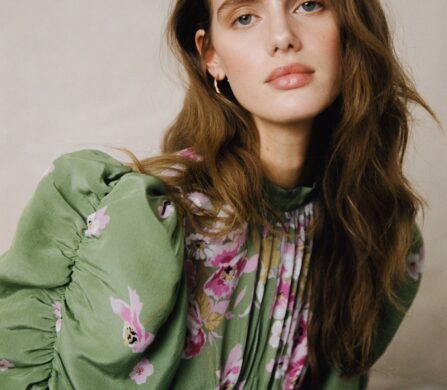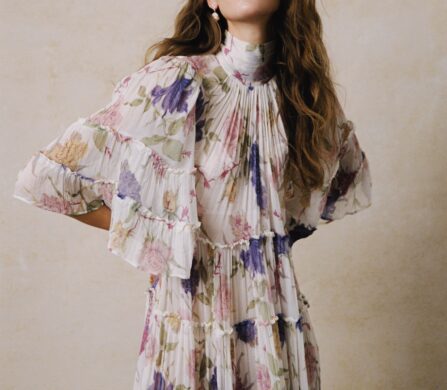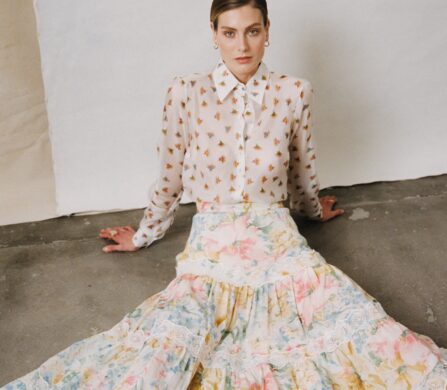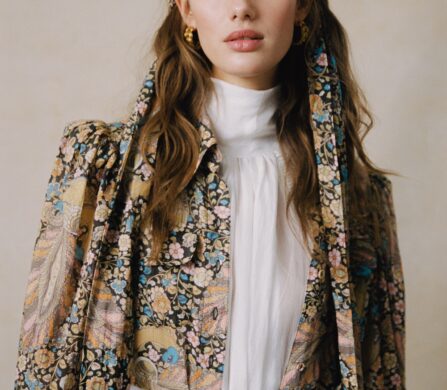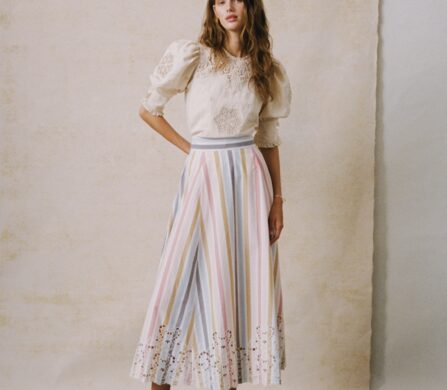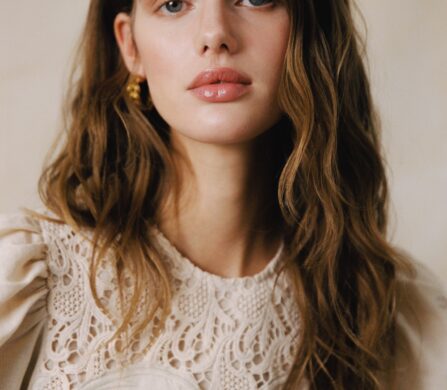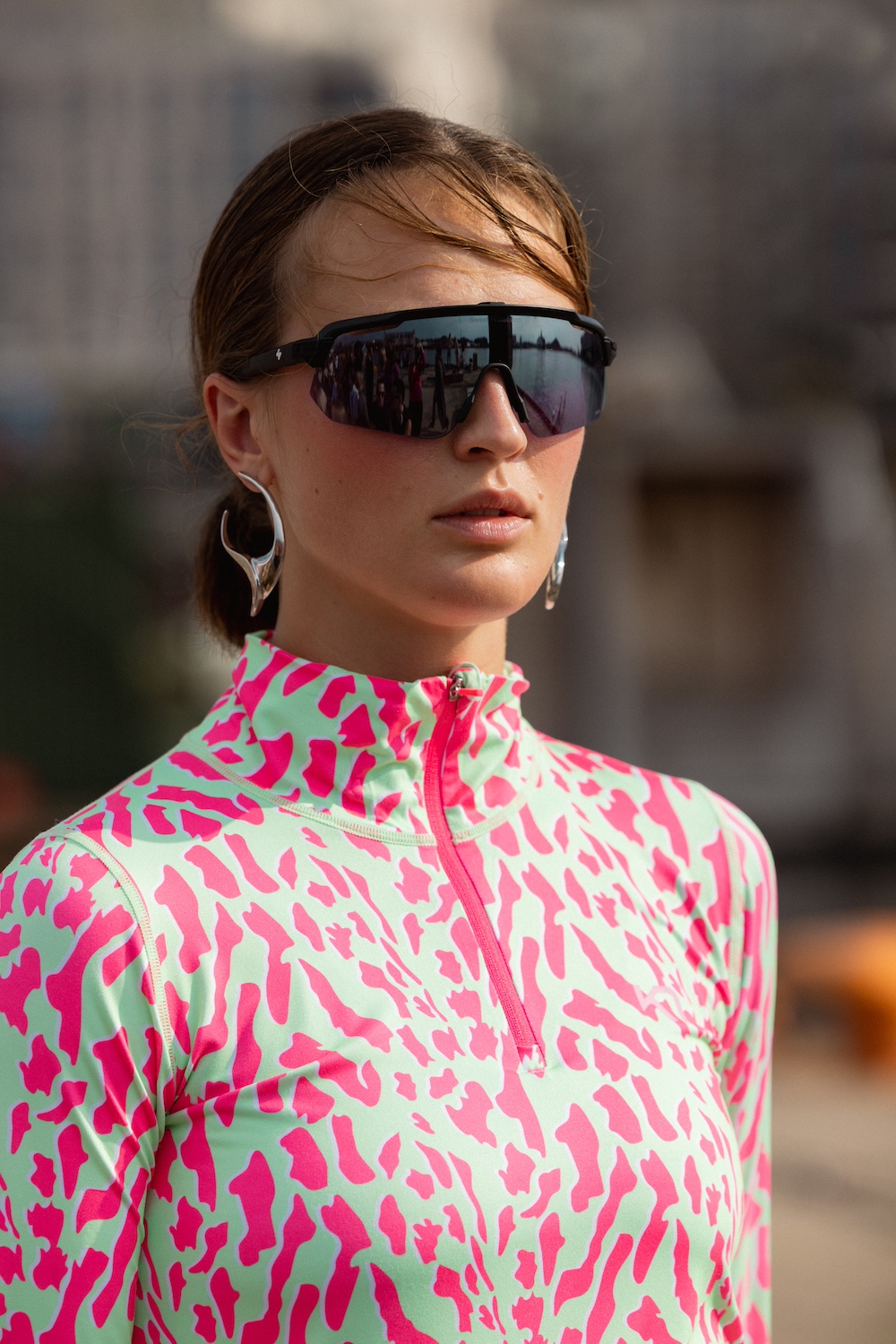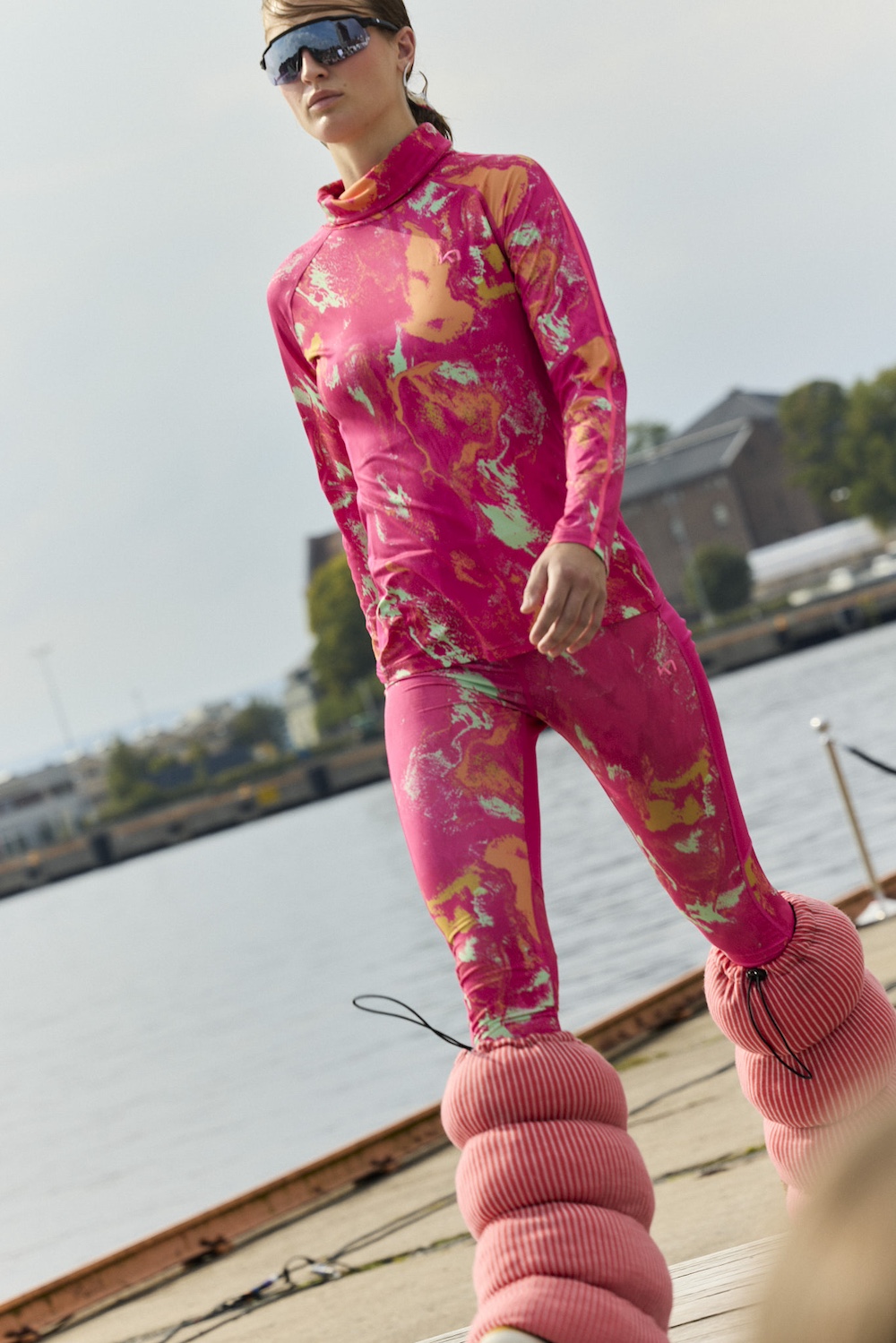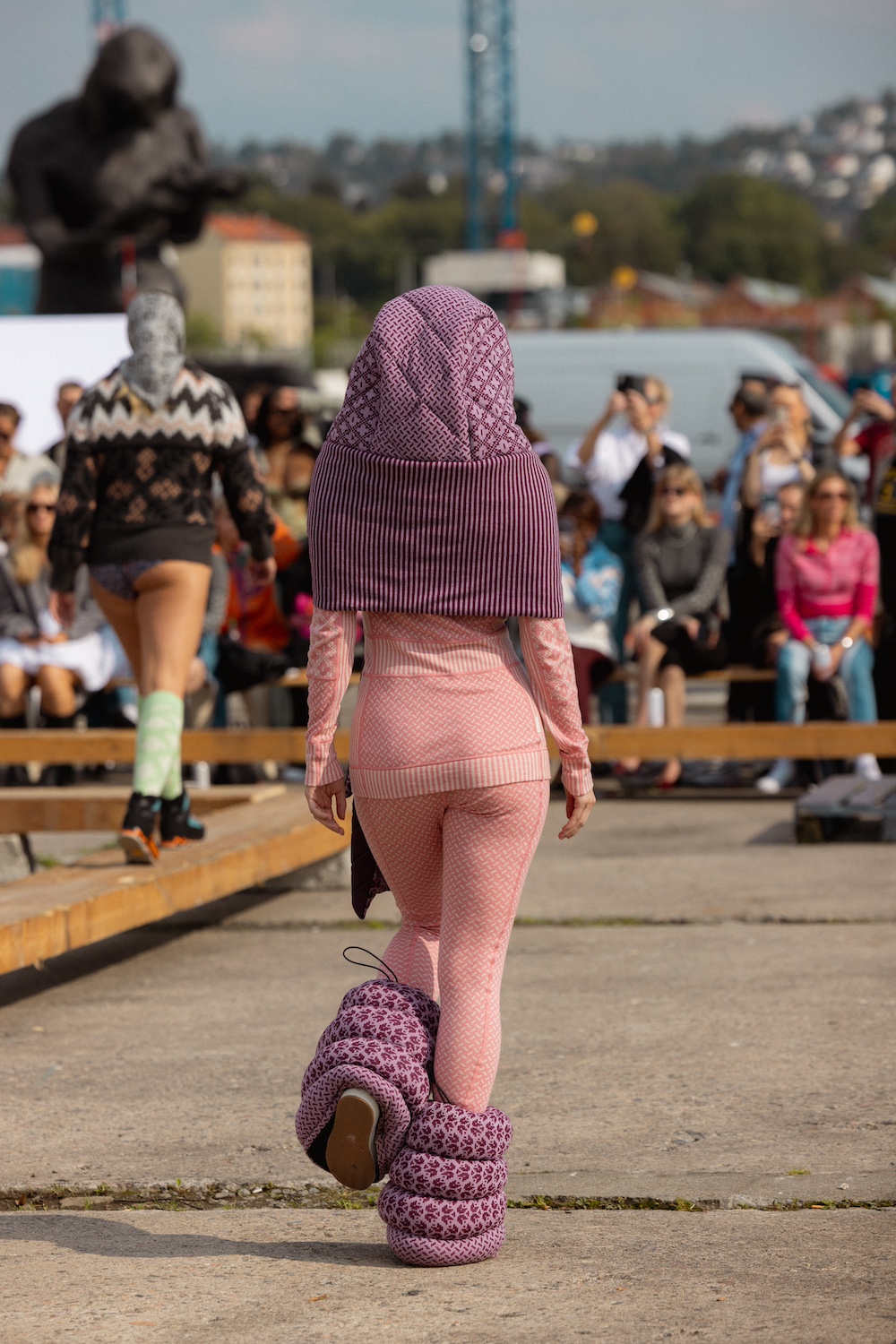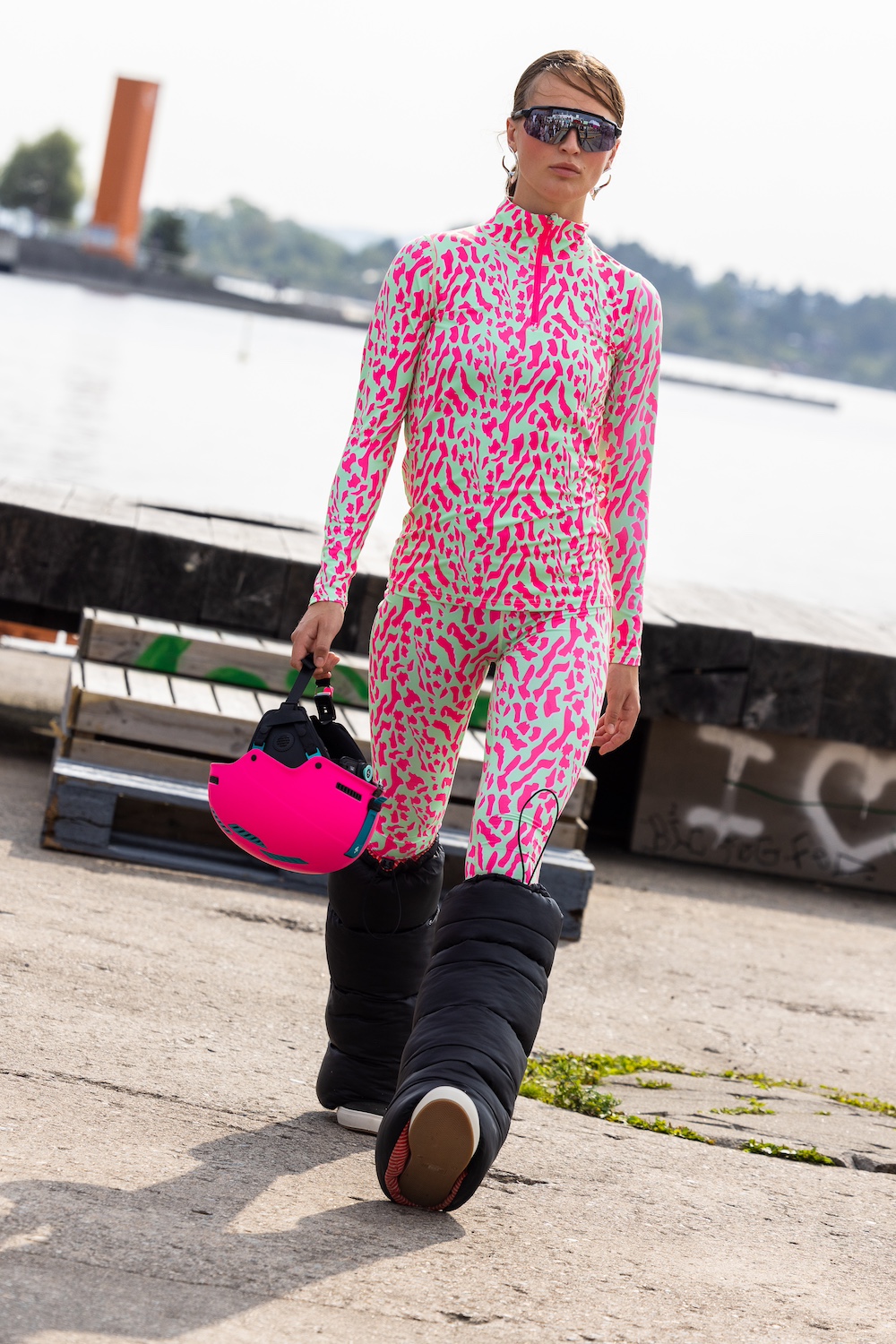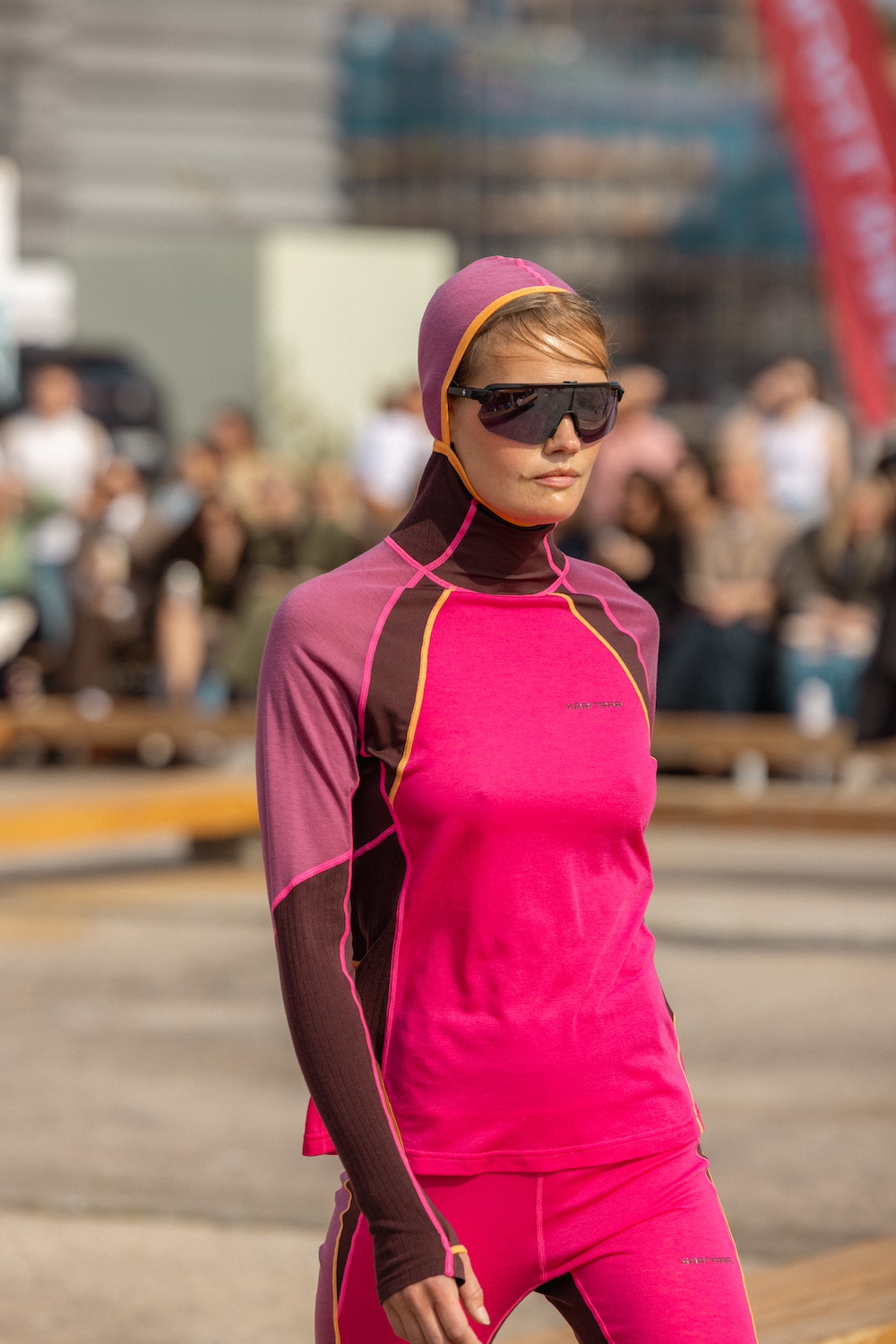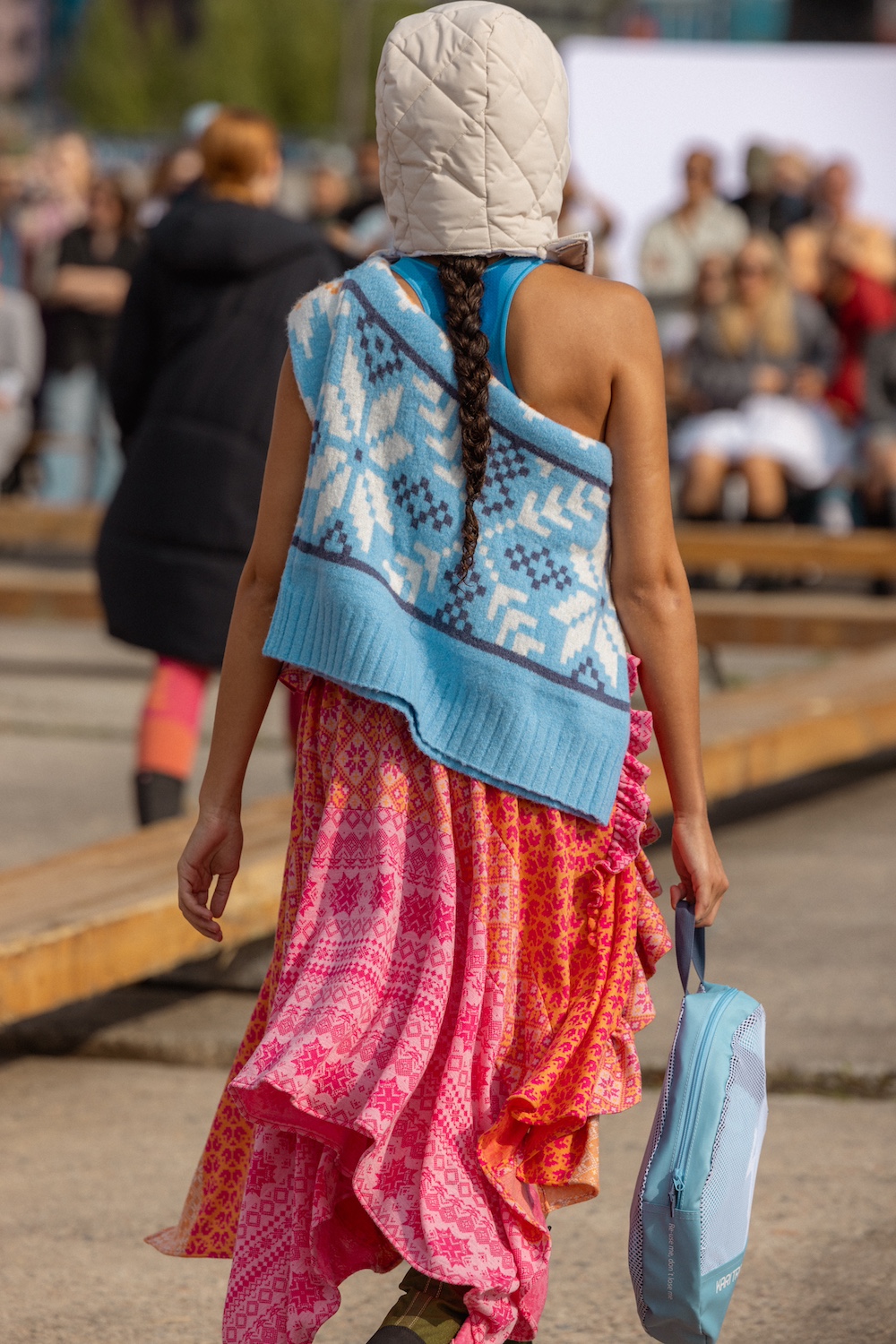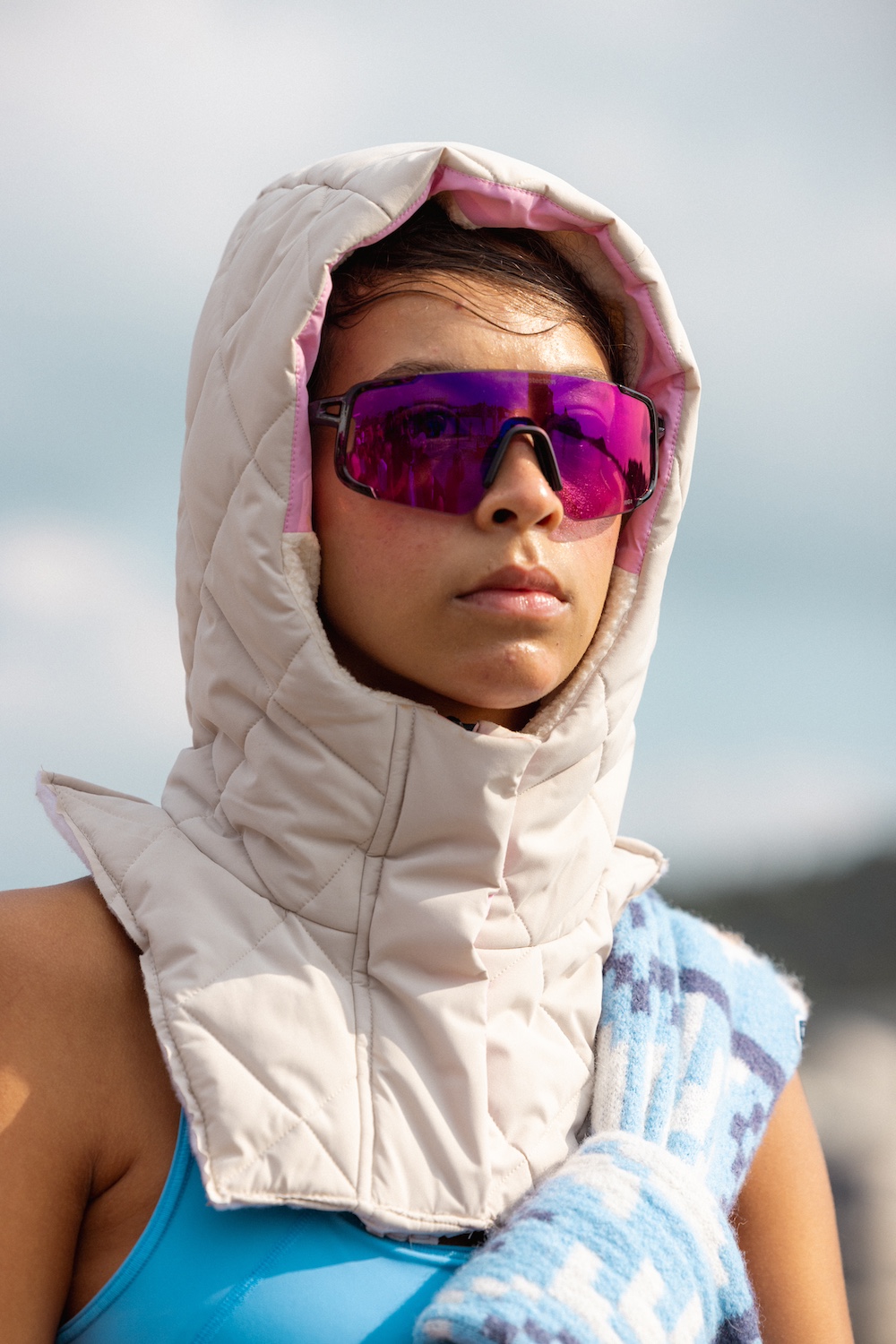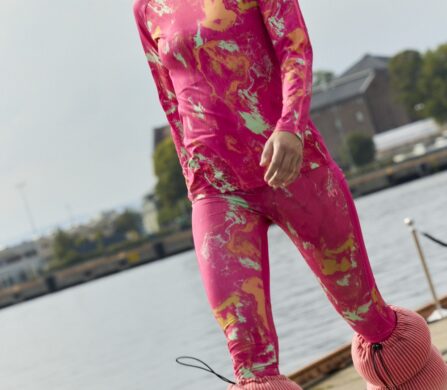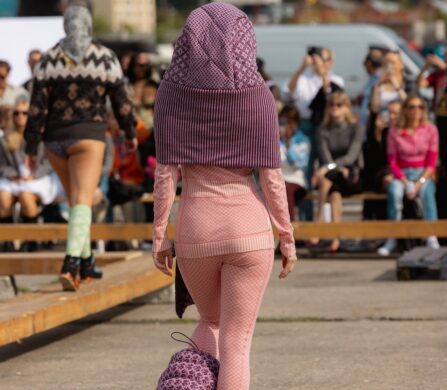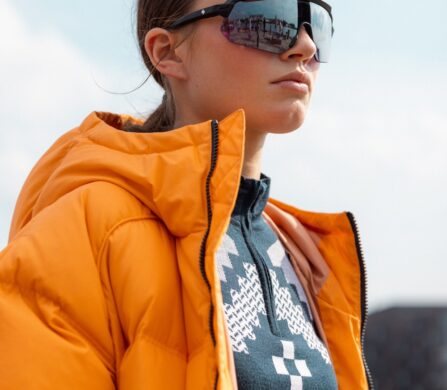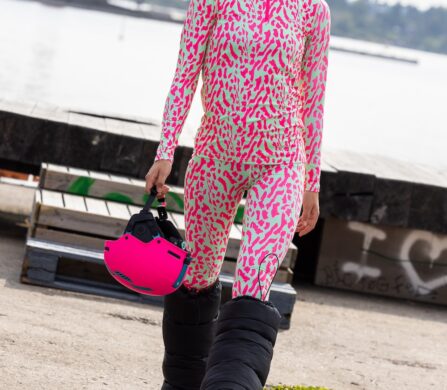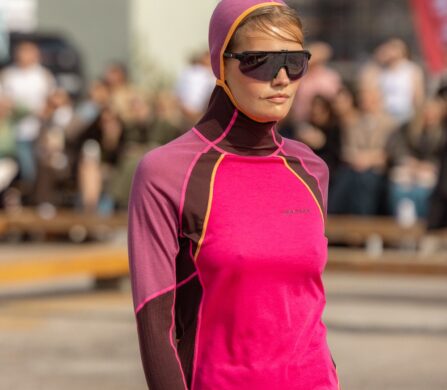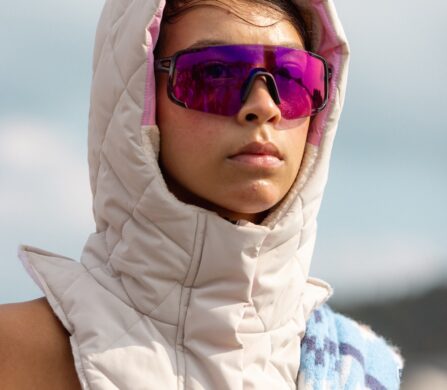Rewrite
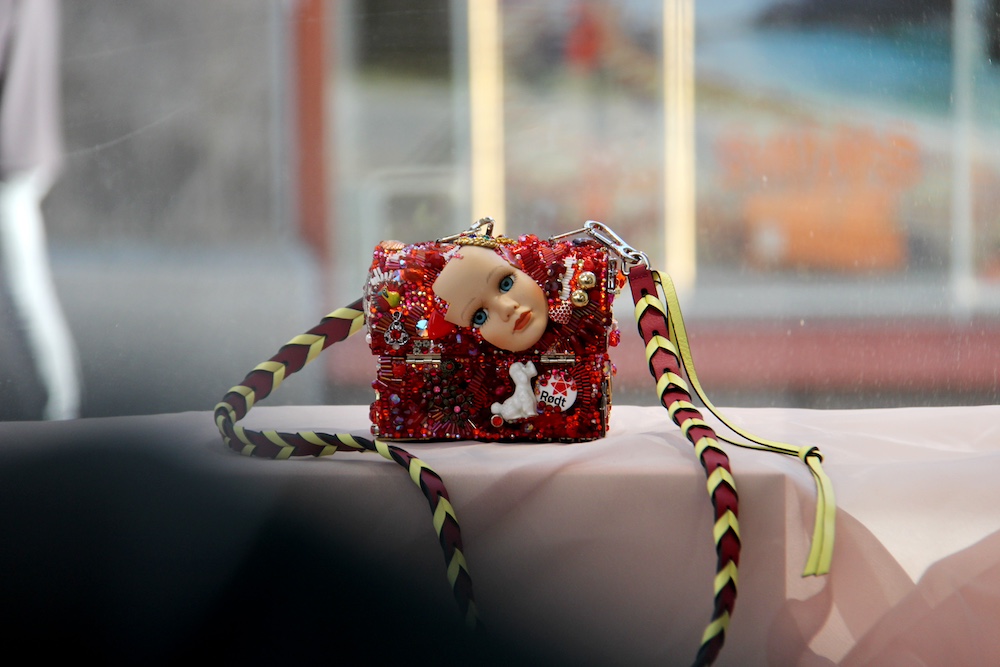
SAIS. Photography | Richard Sveaas
If you think that Scandinavian style is all about clean lines and a neutral palette, you wouldn’t be too far off the mark. Norway is no exception, as we saw at last week’s Oslo Runway, the capital’s fashion week. Brands such as The Curated, One and Other, Envelope 1976 and newcomer Christian Aks demonstrated Norwegian designers’ flare for quiet luxury and exquisitely crafted, but relaxed, tailoring; Livid and Line of Oslo showed fluid and unfussy casual looks and O.A.D. and Woodling showcased the quality and comfort of Nordic knitwear.
But it would be a mistake to conclude that Norwegian fashion is only about minimalism. In between the classic catwalk collections, there were moments of riotous colour and a healthy dose of bling.
One of the most popular labels showing at Oslo Runway, Pearl Octopussy started essentially as a jewellery brand. With “a soft spot for the eccentric and bold”, designer Cathrine Boerter aims to connect with a customer who has a penchant for maximalism. Each piece is carefully handcrafted and designed to be instantly recognisable and to be worn in multiple ways, e.g. chains that can be styled as necklaces, bracelets or belts and brooches that could adorn a blazer, shoe or bag. The brand also upcycles pre-owned garments with its signature sparkle, but here there is a balance between the minimal and the maximal, the feminine and the masculine.
Another jewellery brand that caught our attention was JOSEPHINE. This is fine jewellery made from solid (not plated) metals, designed to last a lifetime and even become heirlooms for future generations, but it’s far from old fashioned. Inspired by “the rebellious spirit and trailblazing style of Empress Joséphine Bonaparte”, it’s young, fun and arty, and the pieces are produced using advanced 3D modelling and printing. To present the collection, the brand hosted a dinner where the tables were carefully staged to mimic great – and late – night of revelry amongst friends. In between the jewellery displays, red wine was spilt, cake was consumed and there were polaroids a plenty (actually shots from JOSEPHINE’s very cool lookbook).
And if that’s not enough bling for your liking, check out SAIS. Each of their bags take hundreds of hours to make, with intricate compositions formed from vintage items and other trinkets. “Nothing is new, nothing is garbage,” the brand tells us. “The materials are a combination of precious metals, gemstones, found objects and beads: an earring found at a party, a fake pearl found on the floor of the liquor store, a piece of a Hermès shawl, an heirloom necklace from an aunt and beads from a bag found in a taxi.”
We were also impressed by 21-year-old Mads Søreide and his label Cohmé Atelier, which made its runway debut this season, but has already been spotted on red carpets and in the press since he started it in 2021 at the tender age of 18. The elegant and glamorous garments are made to order, not just to ensure a perfect fit, but also for “a sense of exclusivity, knowing that the pieces have been crafted specifically for the muse”.
ByTimo is a label that’s made its mark not only in Norway, but globally, and is stocked in over 200 shops worldwide, including Liberty London, Havery Nichols, Nordstrom and Saks 5th Avenue. Founded by Tine Mollat in 2004, ByTimo’s garments are unashamedly feminine and romantic. Inspired by vintage fabrics, the colours and prints are unique to the brand and made in-house, alongside beautiful homewares that would not look out of place in a French chateau or a ‘grandmillennial’ styled city pad, and will soon be joined by a swimwear line.
There was even more colour and print at Kari Traa, where models were joined on the catwalk by skaters, runners and cyclists. In 2002, Traa won an Olympic gold medal for freestyle skiing. Because she couldn’t find high quality, well-fitting sportswear for women, she started to design and make it herself, with the female form in mind and with colour and detail to match her own playful personality. This hobby turned into a business and the brand is now sold internationally with the mission to “empower women everywhere to be confident and unapologetically themselves, no matter where their adventures take them”.
While some of Norway’s brands have gone global, Oslo itself is fast becoming a destination for international fashion labels. Loewe, Dior, CHANEL and MaxMara have all recently opened stores in Promenaden – the city’s most luxurious district – joining the likes of Hermès, Louis Vuitton, Saint Laurent, Bottega Veneta and more. Even more recently, Urmaker Bjerke (a family-owned retailer that is over a century old) opened Europe’s largest watch shop, spanning 2,700 meters and showcasing the likes of Patek Philippe, OMEGA, Tudor and TAG Heuer. A much earlier arrival to the scene is Steen & Strøm, which opened its doors in 1797, making it the world’s oldest department store.
In total, there are now over 800 international brands sold in Promenaden. While luxury is not new to Norway, its residents are not known to shout about labels nor flash showy logos. It will be interesting to see how these latest developments on the shopping scene will influence Norwegian designers and their customers. Will maximalism become the new minimalism? Watch this space.
Read more about Oslo Runway here.
words. Huma Humayun
in HTML format, including tags, to make it appealing and easy to read for Japanese-speaking readers aged 20 to 40 interested in fashion. Organize the content with appropriate headings and subheadings (h1, h2, h3, h4, h5, h6), translating all text, including headings, into Japanese. Retain any existing
tags from

SAIS. Photography | Richard Sveaas
If you think that Scandinavian style is all about clean lines and a neutral palette, you wouldn’t be too far off the mark. Norway is no exception, as we saw at last week’s Oslo Runway, the capital’s fashion week. Brands such as The Curated, One and Other, Envelope 1976 and newcomer Christian Aks demonstrated Norwegian designers’ flare for quiet luxury and exquisitely crafted, but relaxed, tailoring; Livid and Line of Oslo showed fluid and unfussy casual looks and O.A.D. and Woodling showcased the quality and comfort of Nordic knitwear.
But it would be a mistake to conclude that Norwegian fashion is only about minimalism. In between the classic catwalk collections, there were moments of riotous colour and a healthy dose of bling.
One of the most popular labels showing at Oslo Runway, Pearl Octopussy started essentially as a jewellery brand. With “a soft spot for the eccentric and bold”, designer Cathrine Boerter aims to connect with a customer who has a penchant for maximalism. Each piece is carefully handcrafted and designed to be instantly recognisable and to be worn in multiple ways, e.g. chains that can be styled as necklaces, bracelets or belts and brooches that could adorn a blazer, shoe or bag. The brand also upcycles pre-owned garments with its signature sparkle, but here there is a balance between the minimal and the maximal, the feminine and the masculine.
Another jewellery brand that caught our attention was JOSEPHINE. This is fine jewellery made from solid (not plated) metals, designed to last a lifetime and even become heirlooms for future generations, but it’s far from old fashioned. Inspired by “the rebellious spirit and trailblazing style of Empress Joséphine Bonaparte”, it’s young, fun and arty, and the pieces are produced using advanced 3D modelling and printing. To present the collection, the brand hosted a dinner where the tables were carefully staged to mimic great – and late – night of revelry amongst friends. In between the jewellery displays, red wine was spilt, cake was consumed and there were polaroids a plenty (actually shots from JOSEPHINE’s very cool lookbook).
And if that’s not enough bling for your liking, check out SAIS. Each of their bags take hundreds of hours to make, with intricate compositions formed from vintage items and other trinkets. “Nothing is new, nothing is garbage,” the brand tells us. “The materials are a combination of precious metals, gemstones, found objects and beads: an earring found at a party, a fake pearl found on the floor of the liquor store, a piece of a Hermès shawl, an heirloom necklace from an aunt and beads from a bag found in a taxi.”
We were also impressed by 21-year-old Mads Søreide and his label Cohmé Atelier, which made its runway debut this season, but has already been spotted on red carpets and in the press since he started it in 2021 at the tender age of 18. The elegant and glamorous garments are made to order, not just to ensure a perfect fit, but also for “a sense of exclusivity, knowing that the pieces have been crafted specifically for the muse”.
ByTimo is a label that’s made its mark not only in Norway, but globally, and is stocked in over 200 shops worldwide, including Liberty London, Havery Nichols, Nordstrom and Saks 5th Avenue. Founded by Tine Mollat in 2004, ByTimo’s garments are unashamedly feminine and romantic. Inspired by vintage fabrics, the colours and prints are unique to the brand and made in-house, alongside beautiful homewares that would not look out of place in a French chateau or a ‘grandmillennial’ styled city pad, and will soon be joined by a swimwear line.
There was even more colour and print at Kari Traa, where models were joined on the catwalk by skaters, runners and cyclists. In 2002, Traa won an Olympic gold medal for freestyle skiing. Because she couldn’t find high quality, well-fitting sportswear for women, she started to design and make it herself, with the female form in mind and with colour and detail to match her own playful personality. This hobby turned into a business and the brand is now sold internationally with the mission to “empower women everywhere to be confident and unapologetically themselves, no matter where their adventures take them”.
While some of Norway’s brands have gone global, Oslo itself is fast becoming a destination for international fashion labels. Loewe, Dior, CHANEL and MaxMara have all recently opened stores in Promenaden – the city’s most luxurious district – joining the likes of Hermès, Louis Vuitton, Saint Laurent, Bottega Veneta and more. Even more recently, Urmaker Bjerke (a family-owned retailer that is over a century old) opened Europe’s largest watch shop, spanning 2,700 meters and showcasing the likes of Patek Philippe, OMEGA, Tudor and TAG Heuer. A much earlier arrival to the scene is Steen & Strøm, which opened its doors in 1797, making it the world’s oldest department store.
In total, there are now over 800 international brands sold in Promenaden. While luxury is not new to Norway, its residents are not known to shout about labels nor flash showy logos. It will be interesting to see how these latest developments on the shopping scene will influence Norwegian designers and their customers. Will maximalism become the new minimalism? Watch this space.
Read more about Oslo Runway here.
words. Huma Humayun
and integrate them seamlessly into the new content without adding new tags. Ensure the new content is fashion-related, written entirely in Japanese, and approximately 1500 words. Conclude with a “結論” section and a well-formatted “よくある質問” section. Avoid including an introduction or a note explaining the process.
